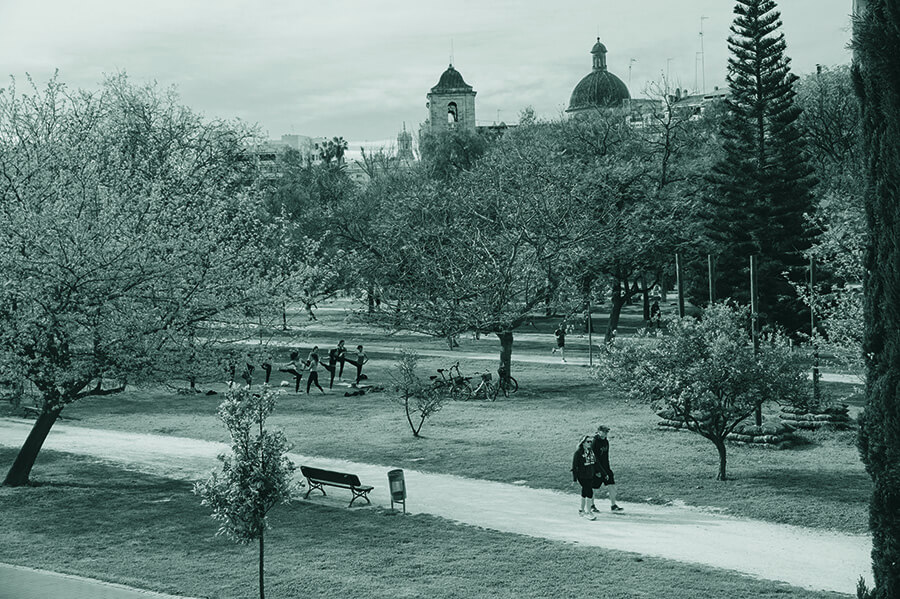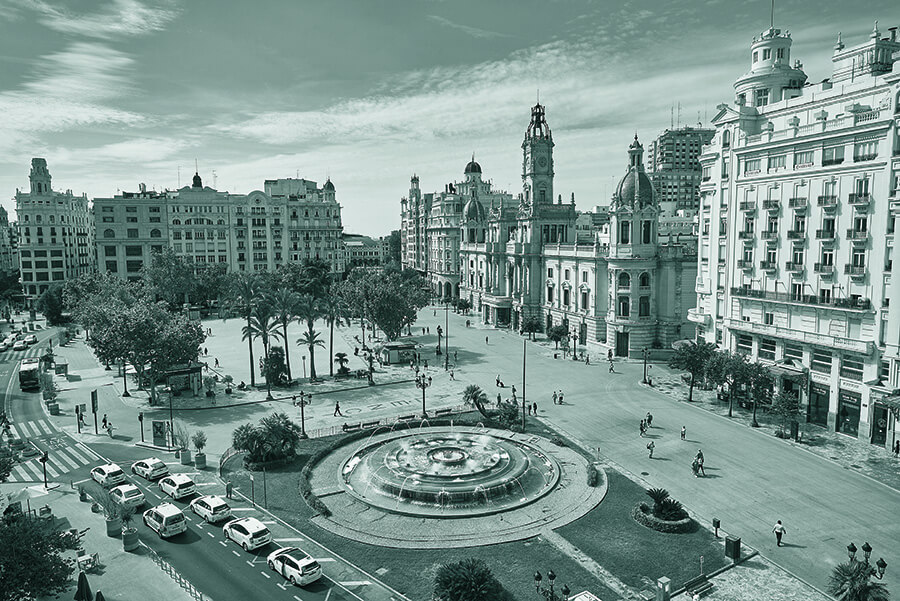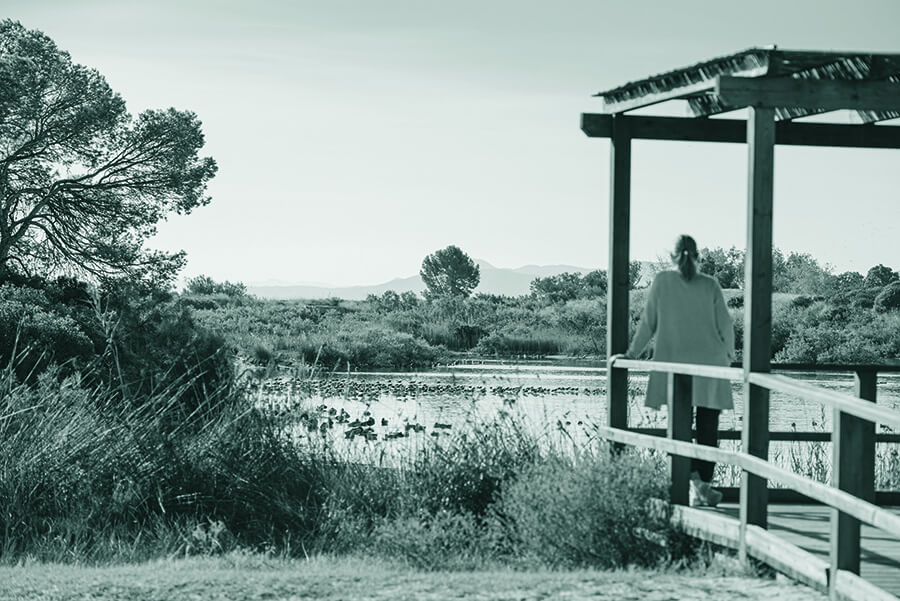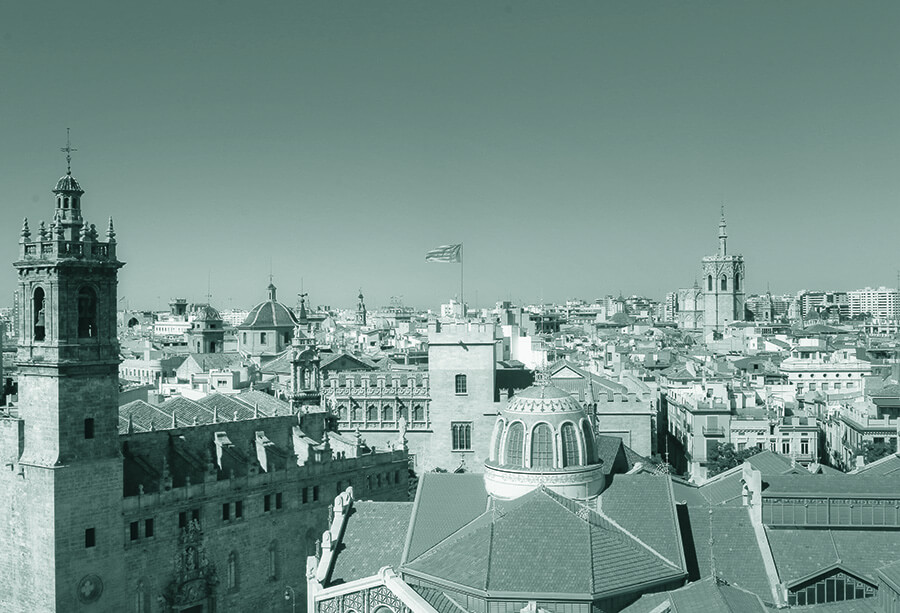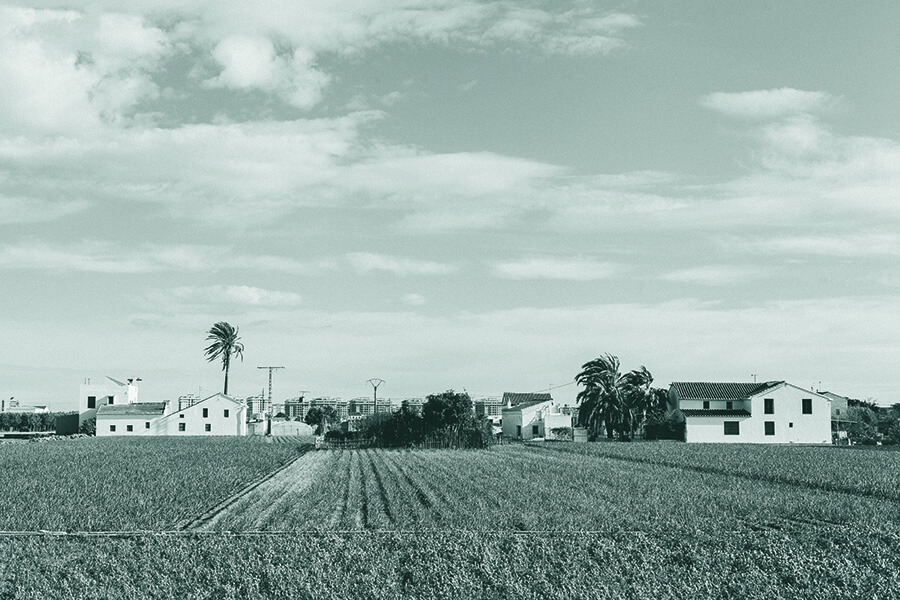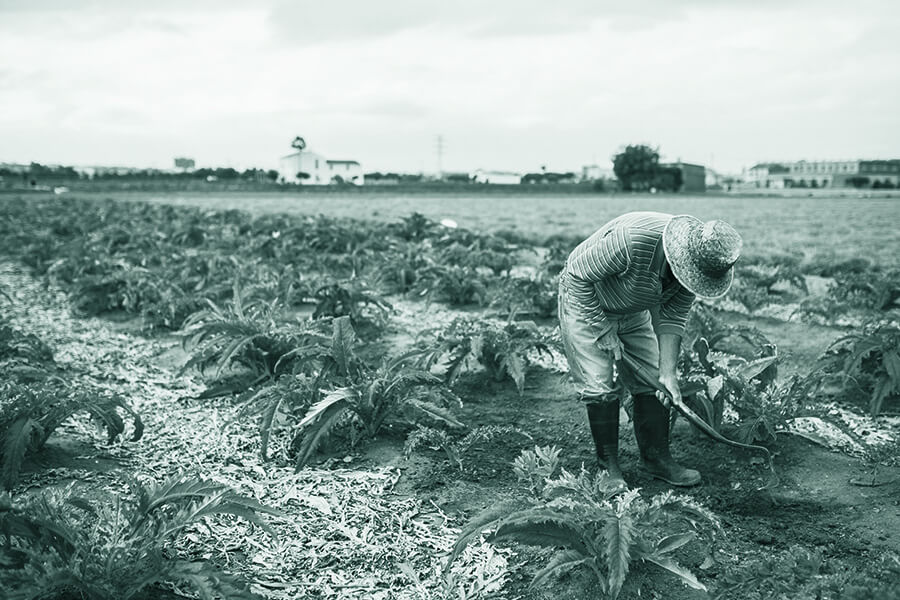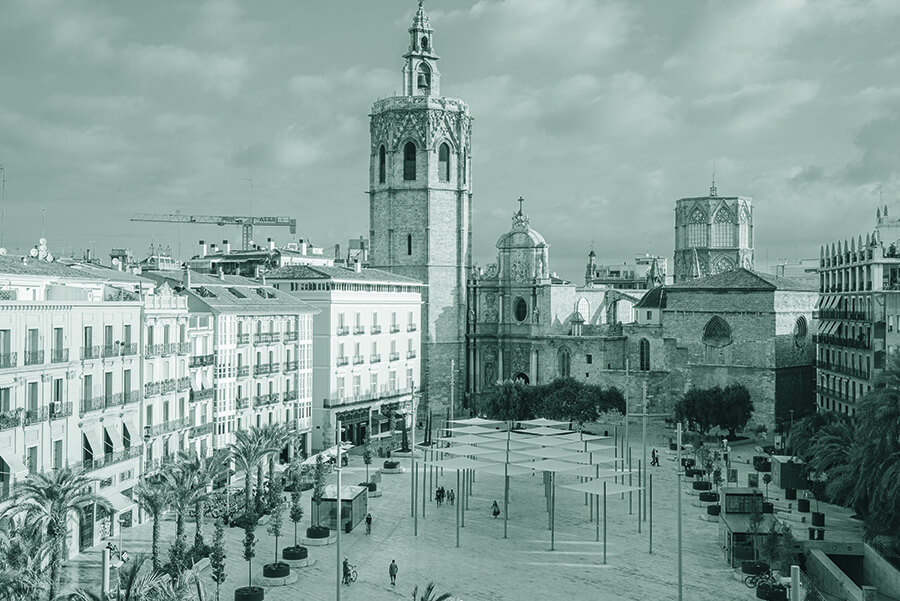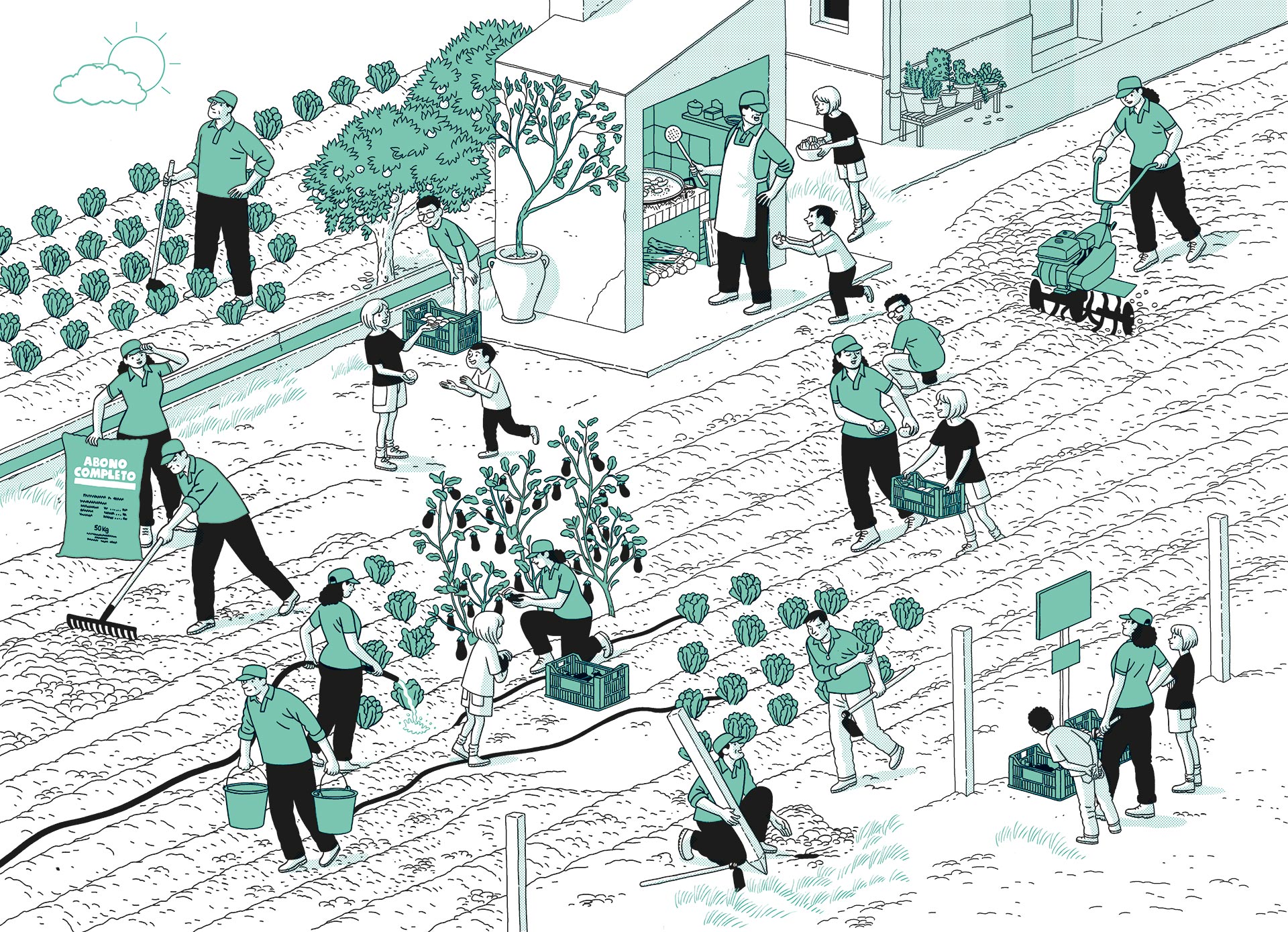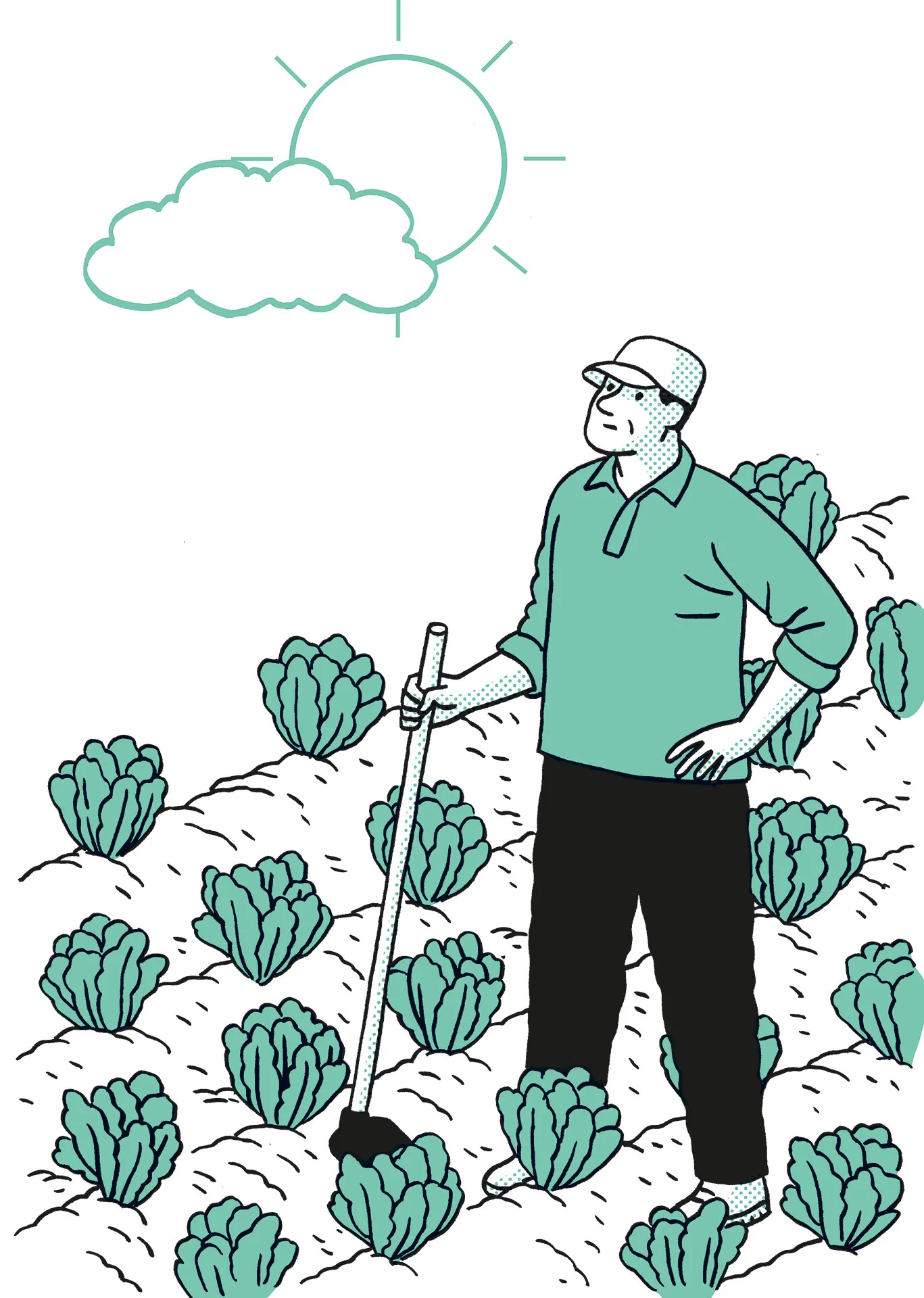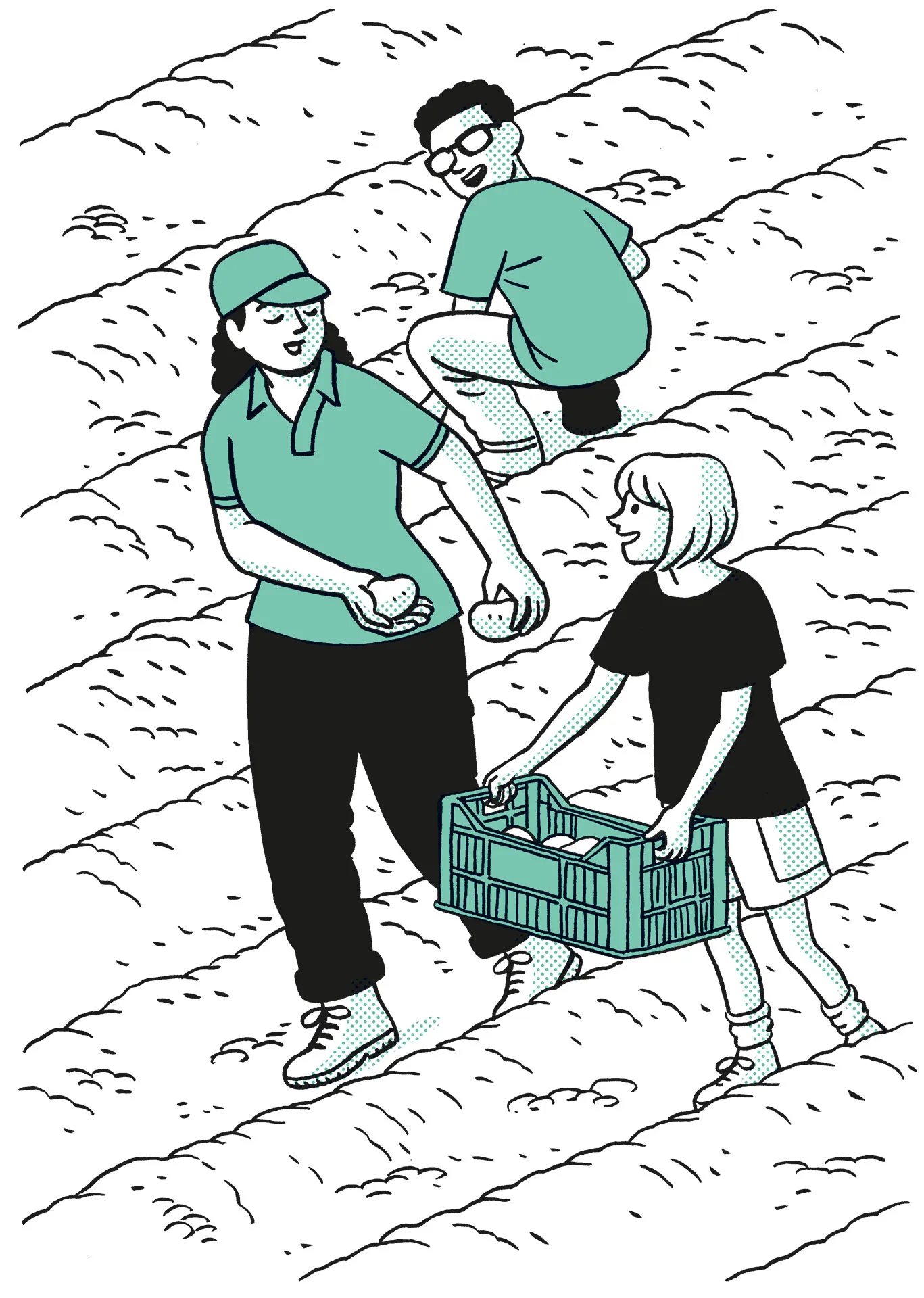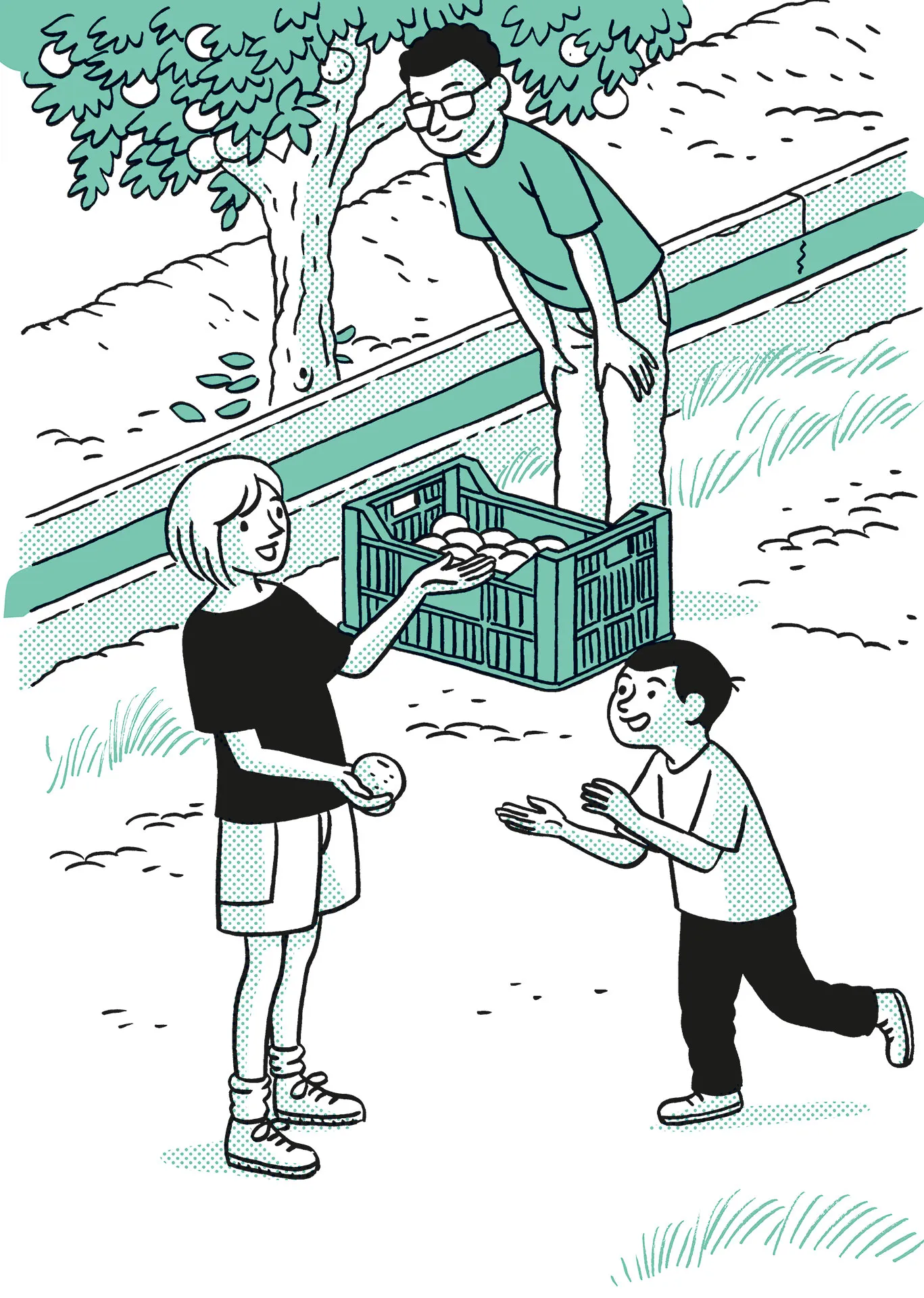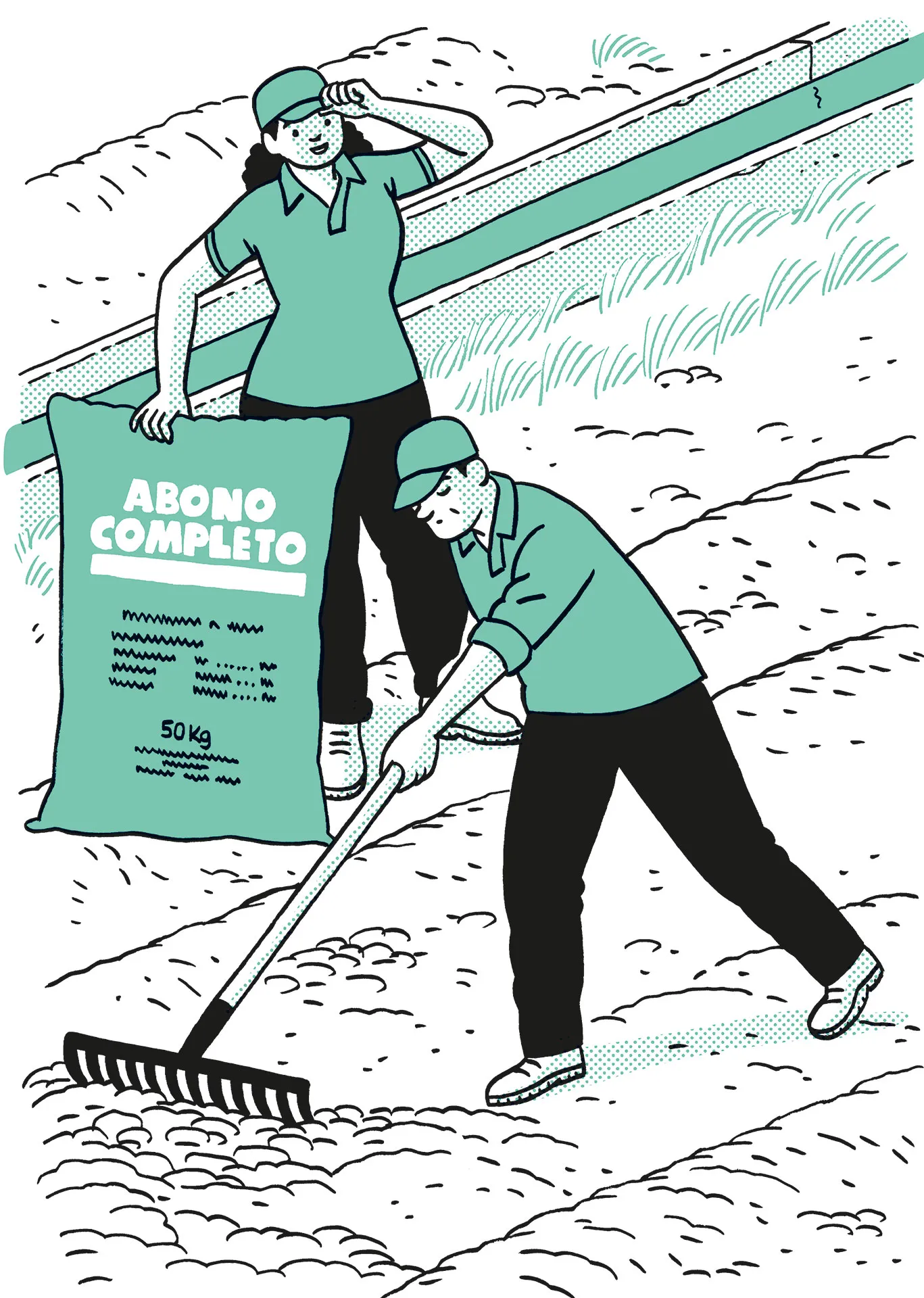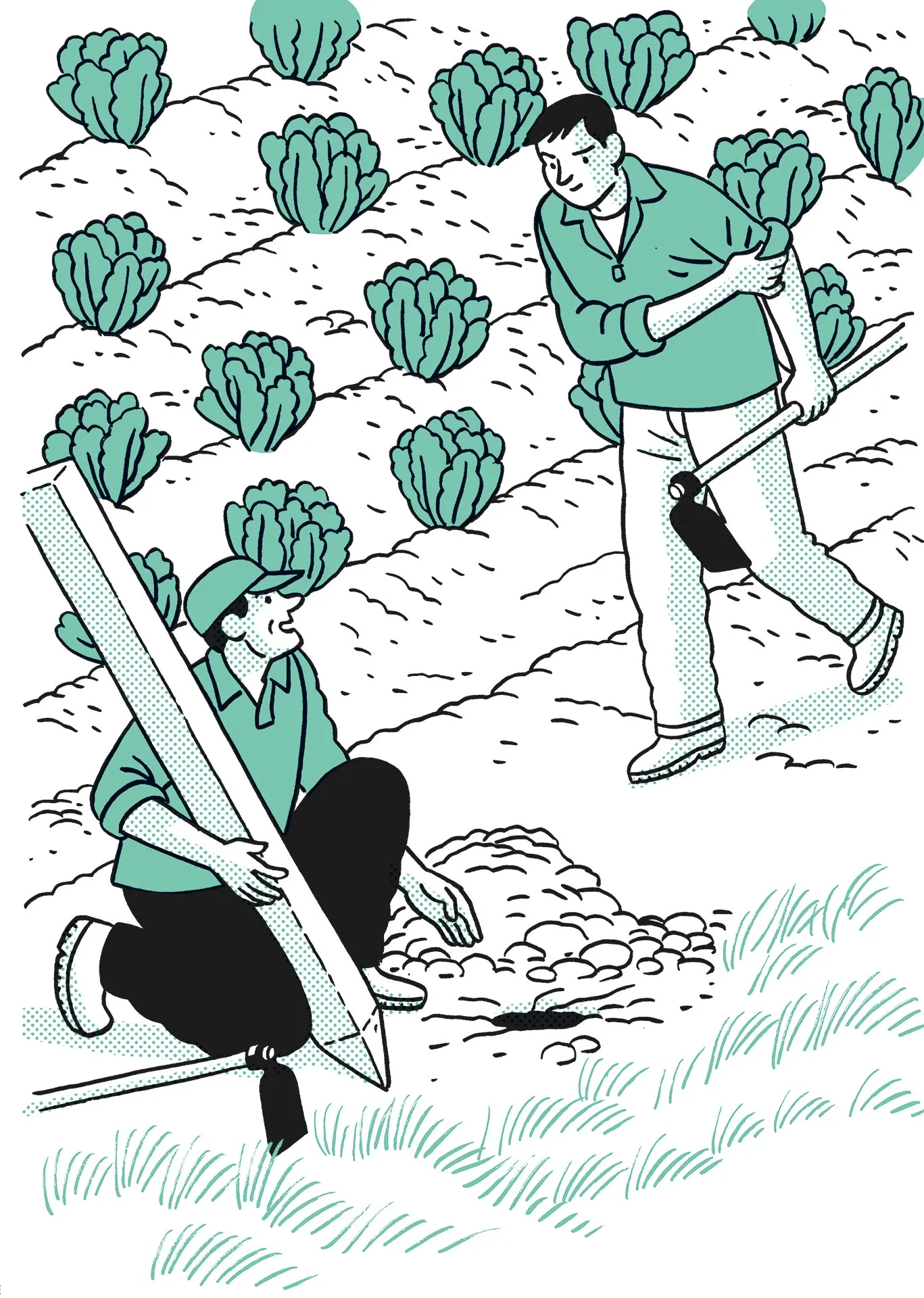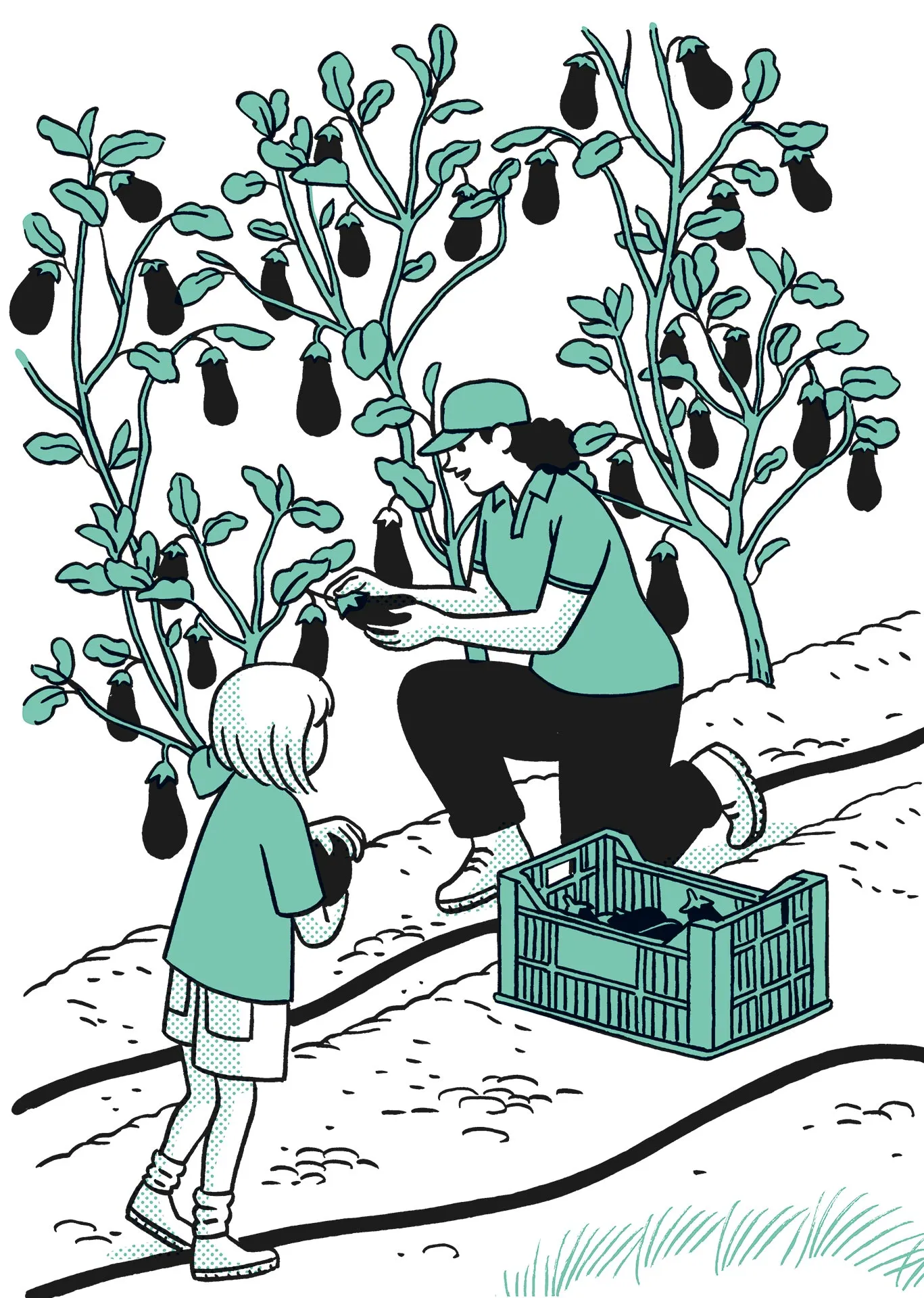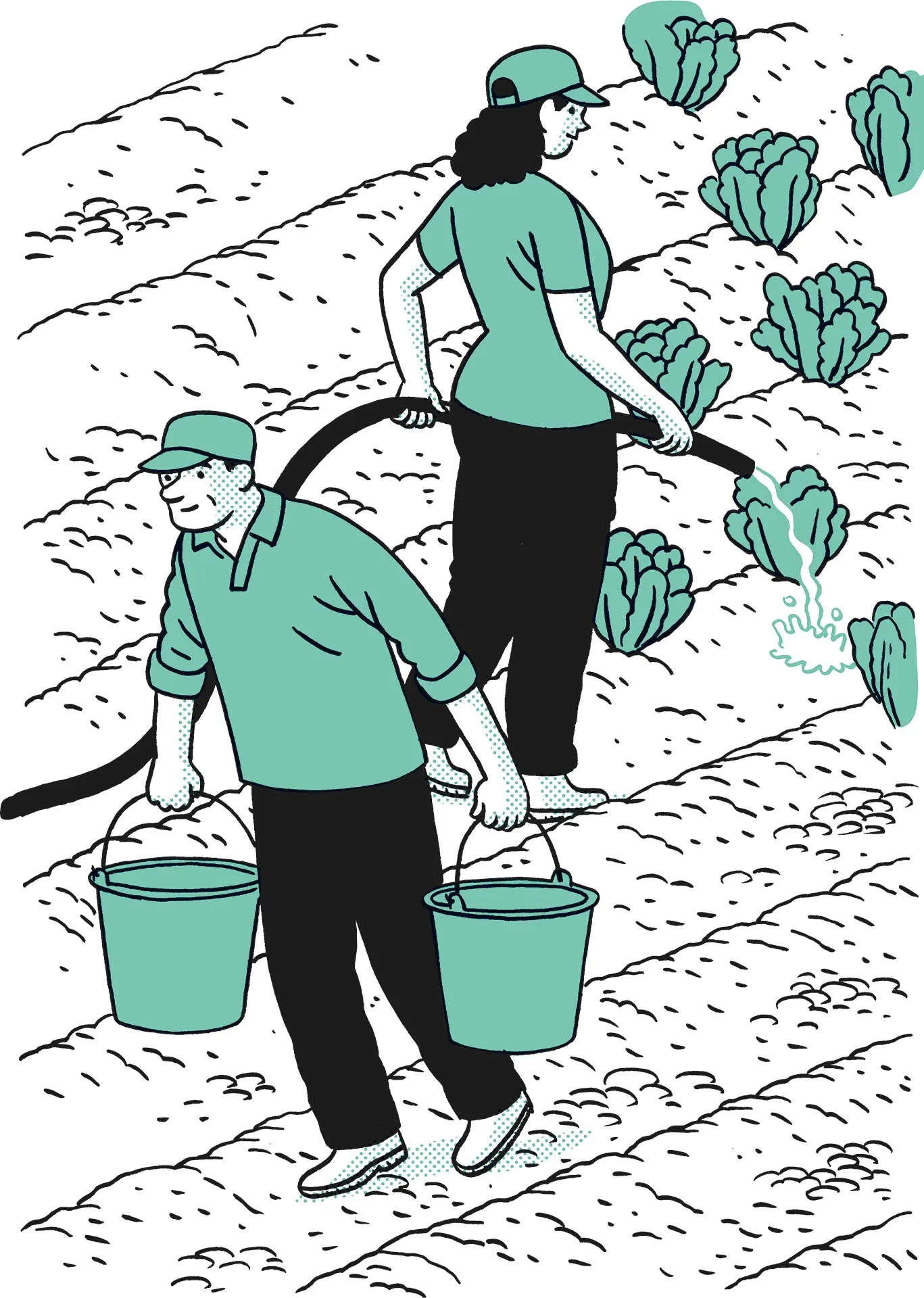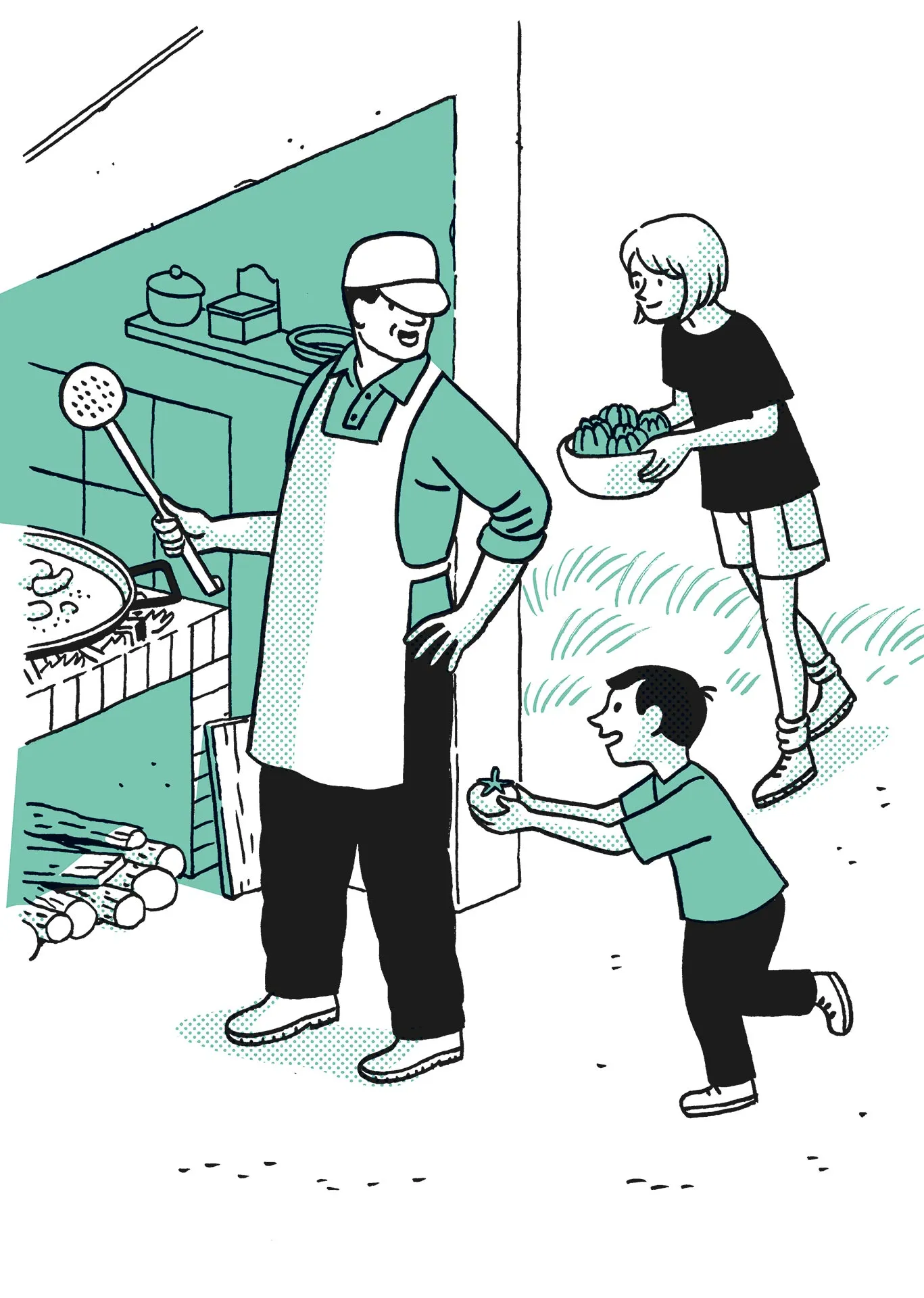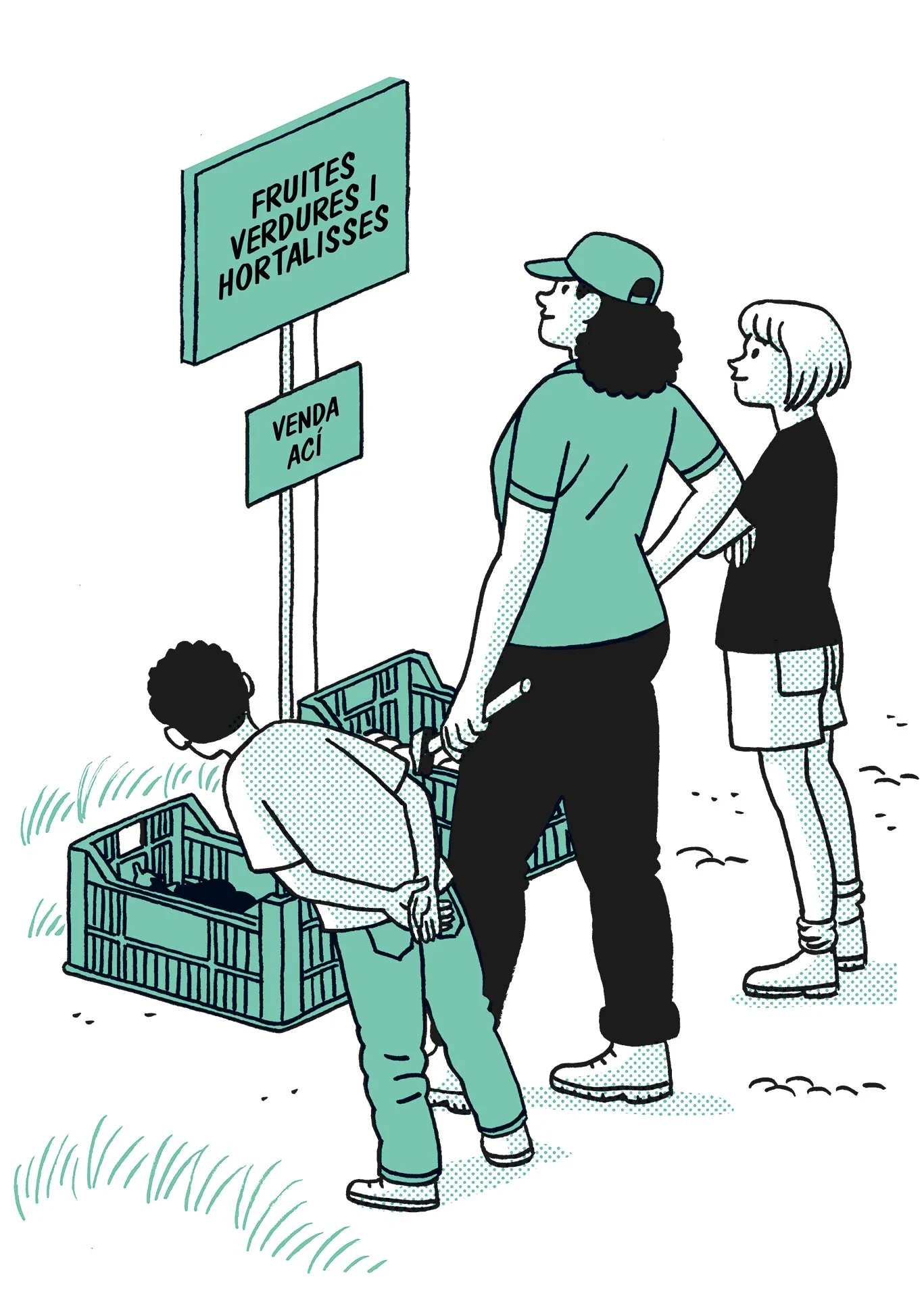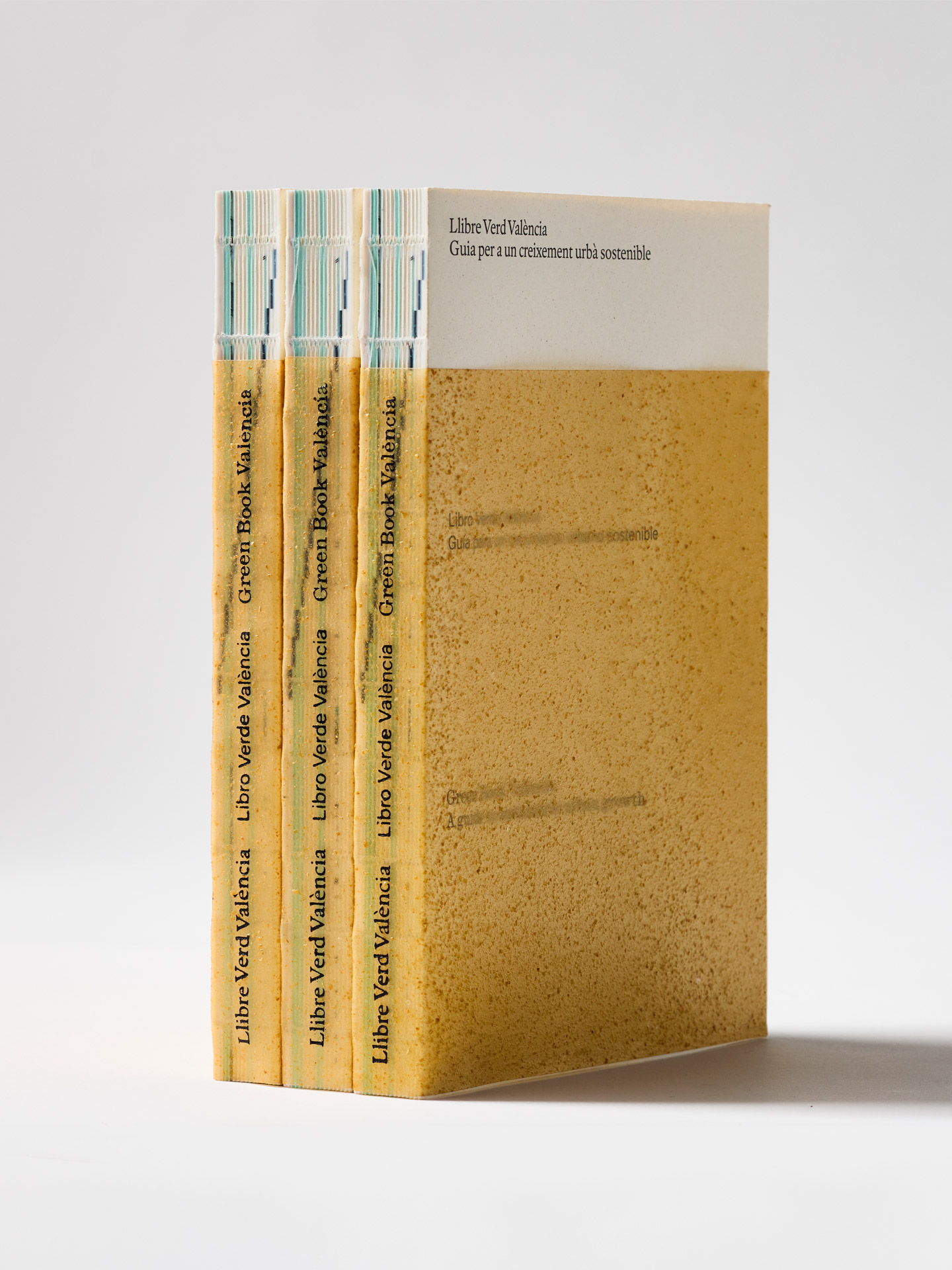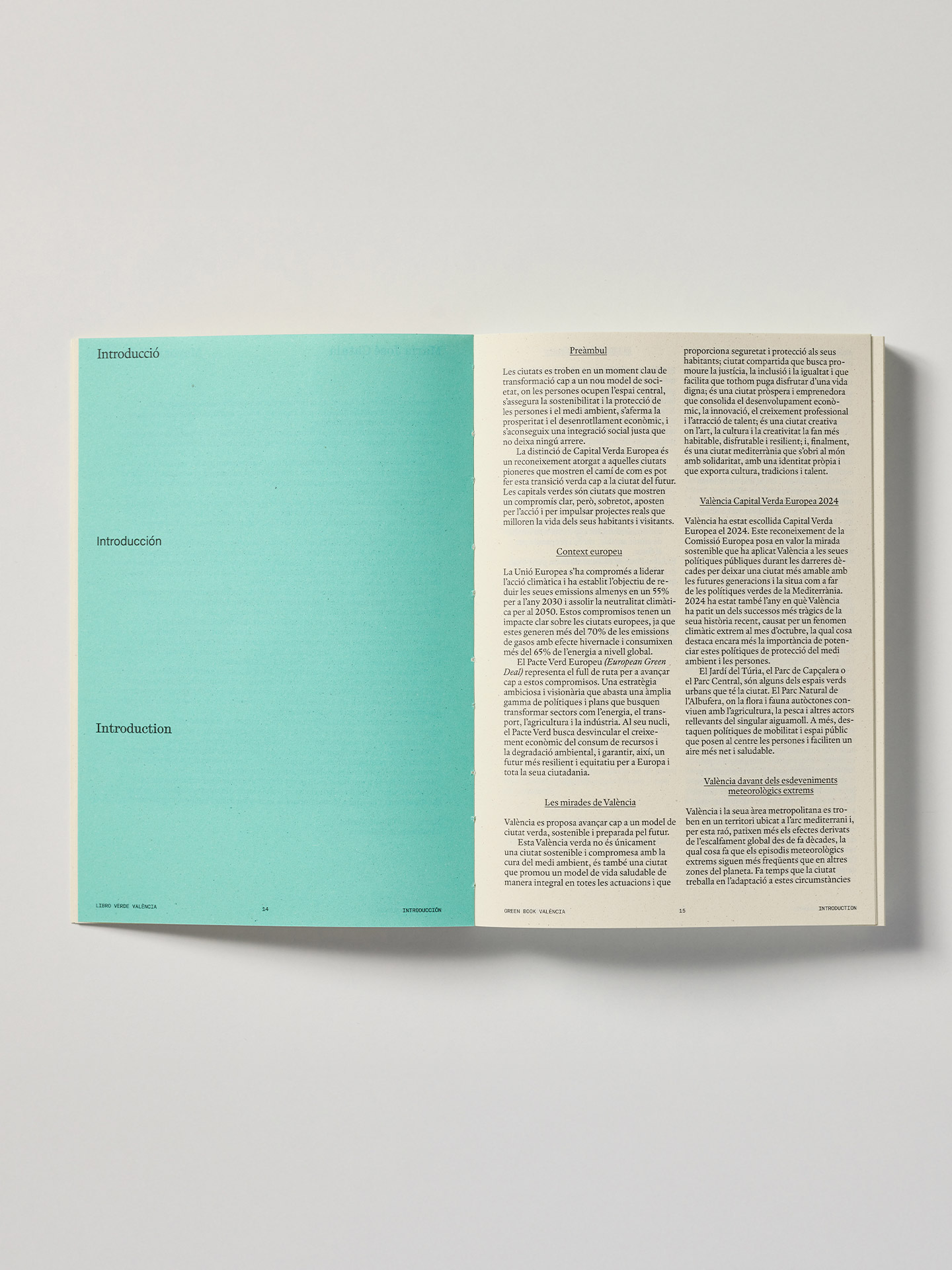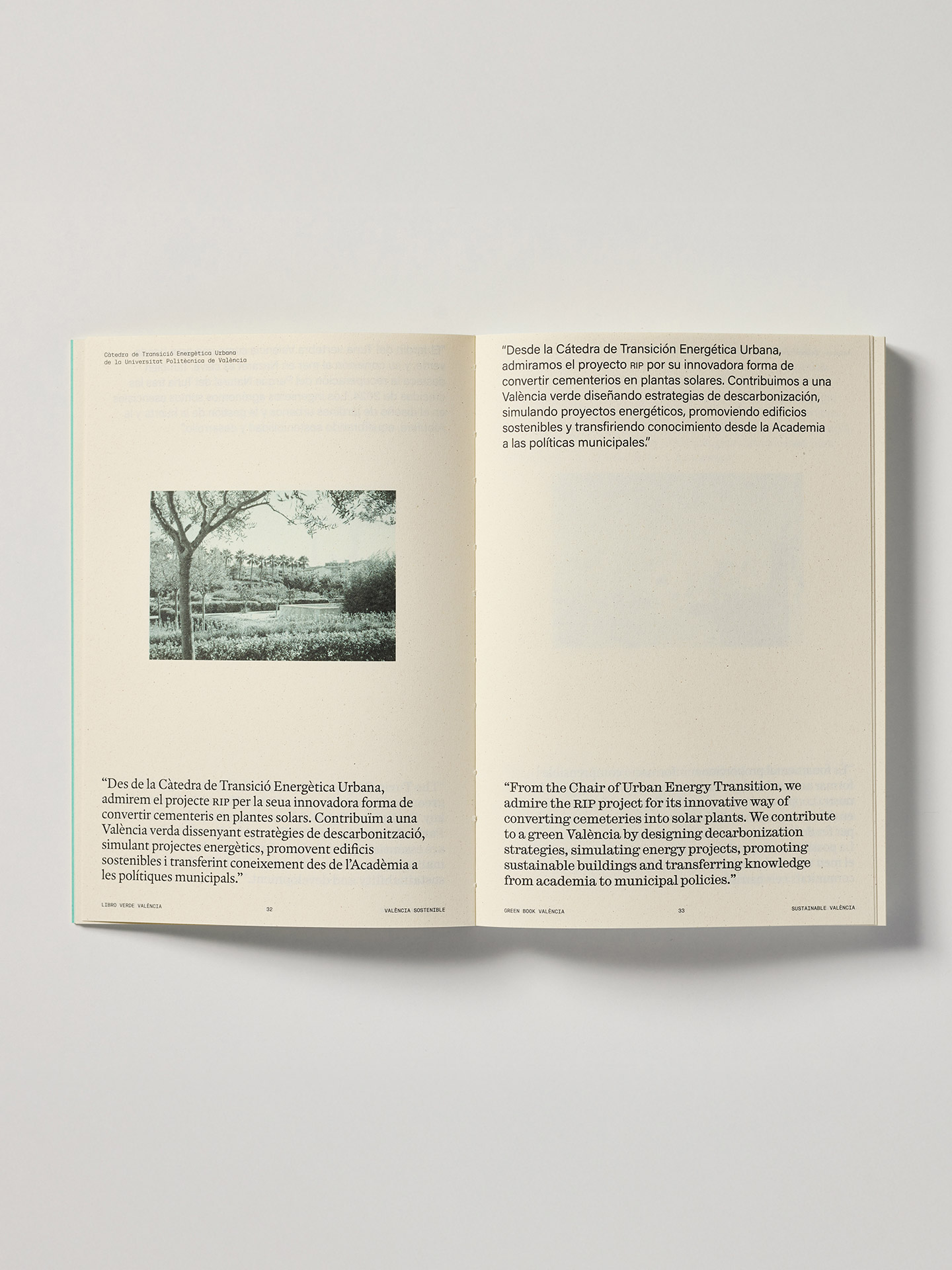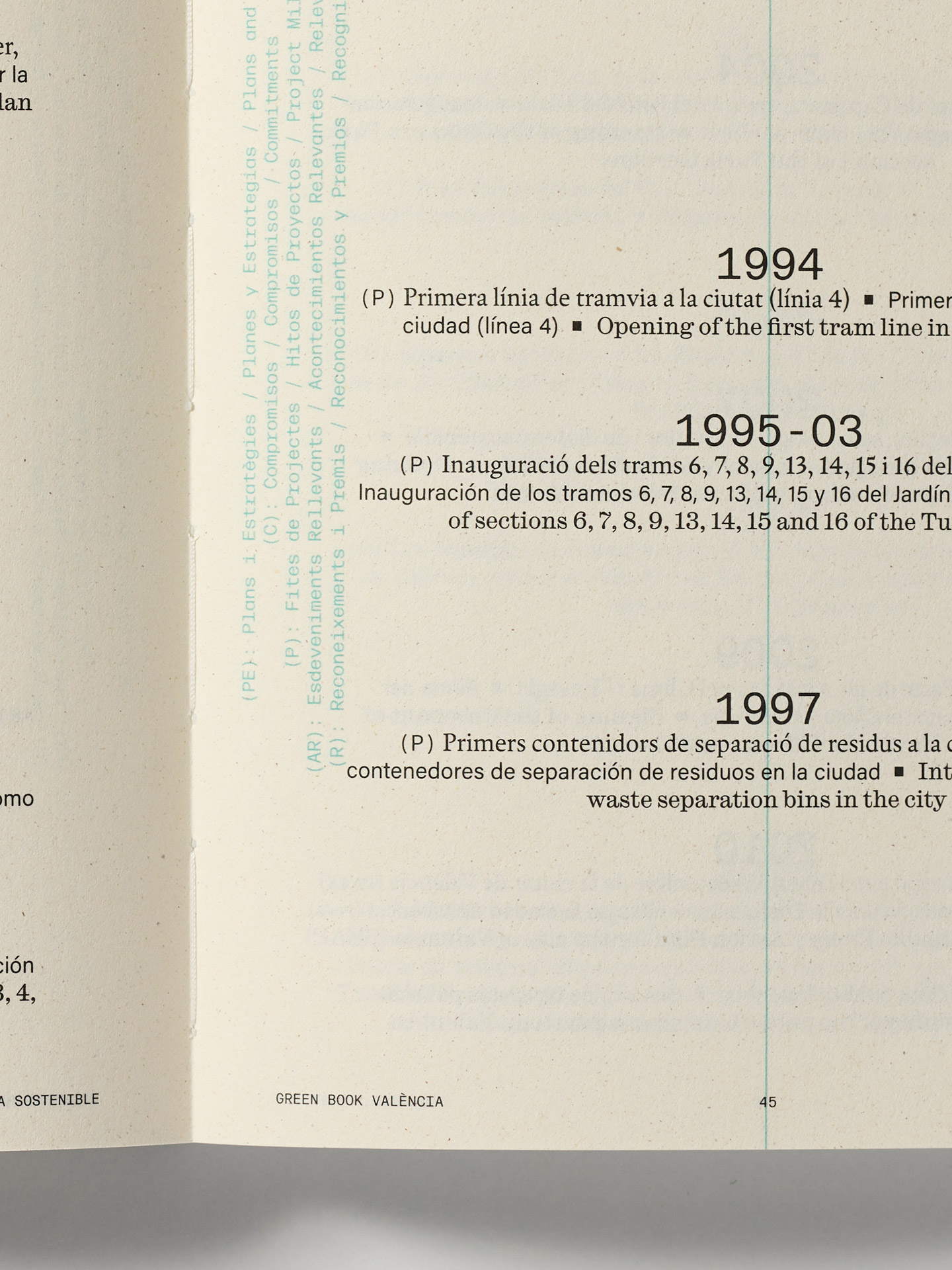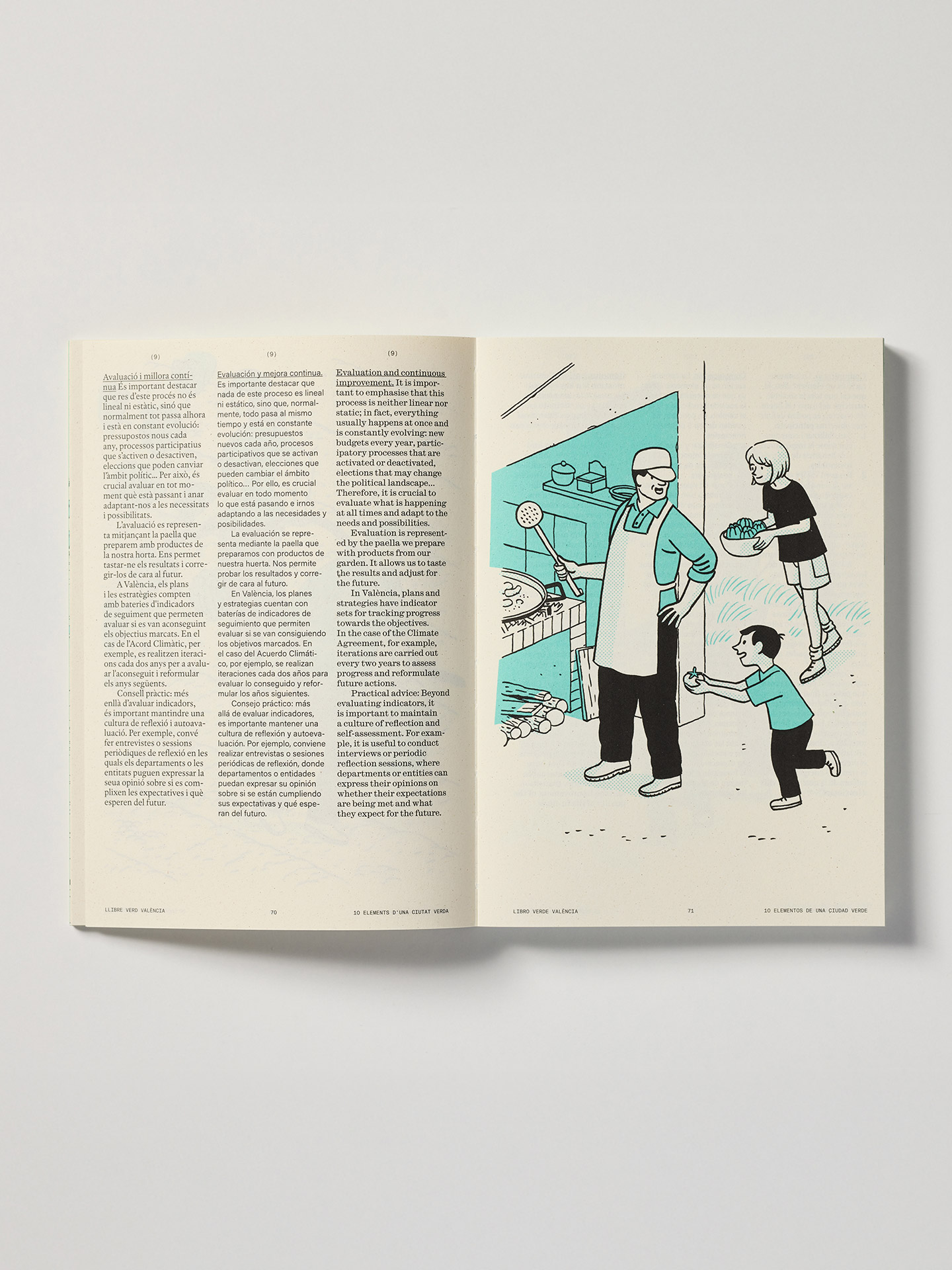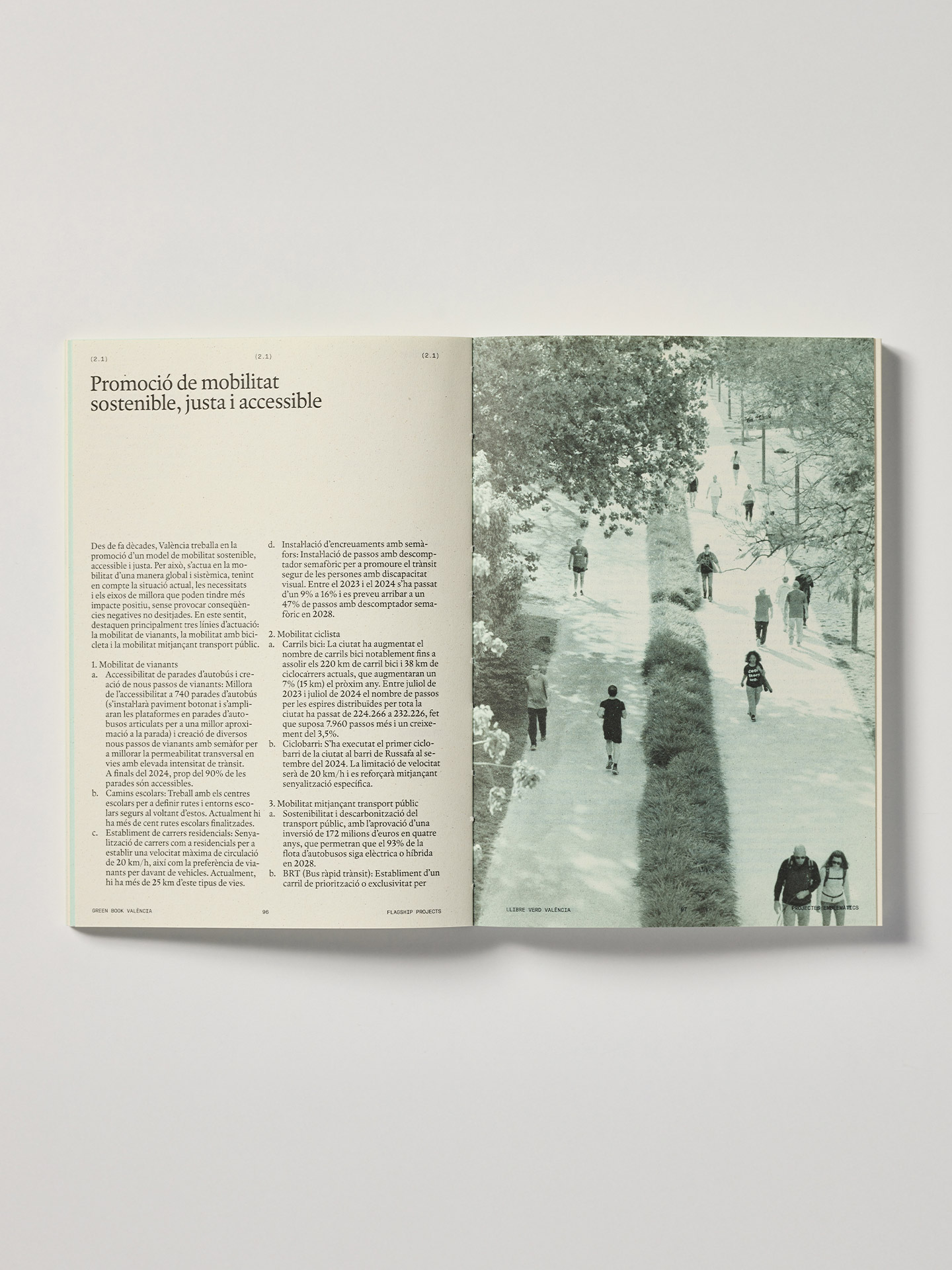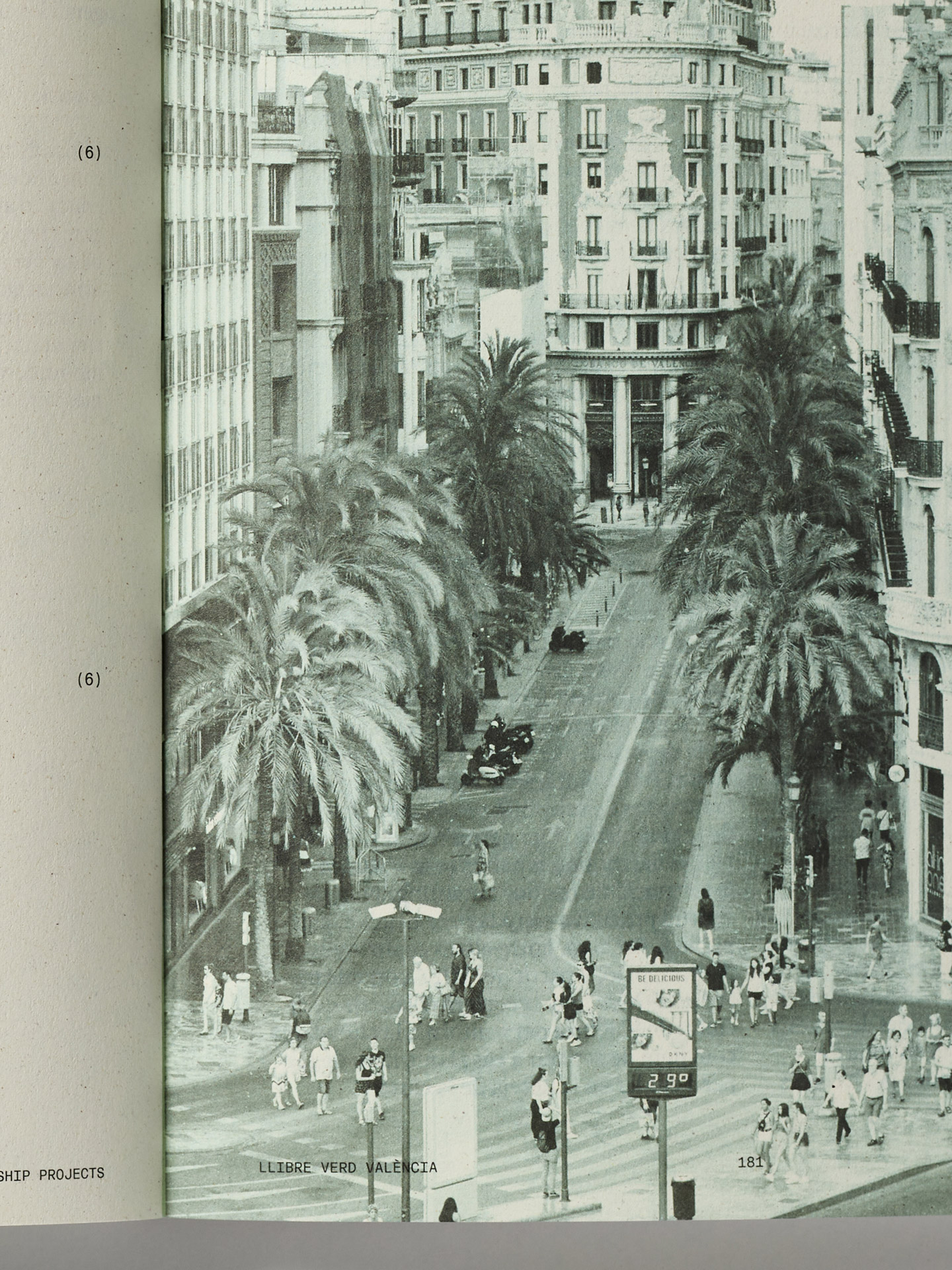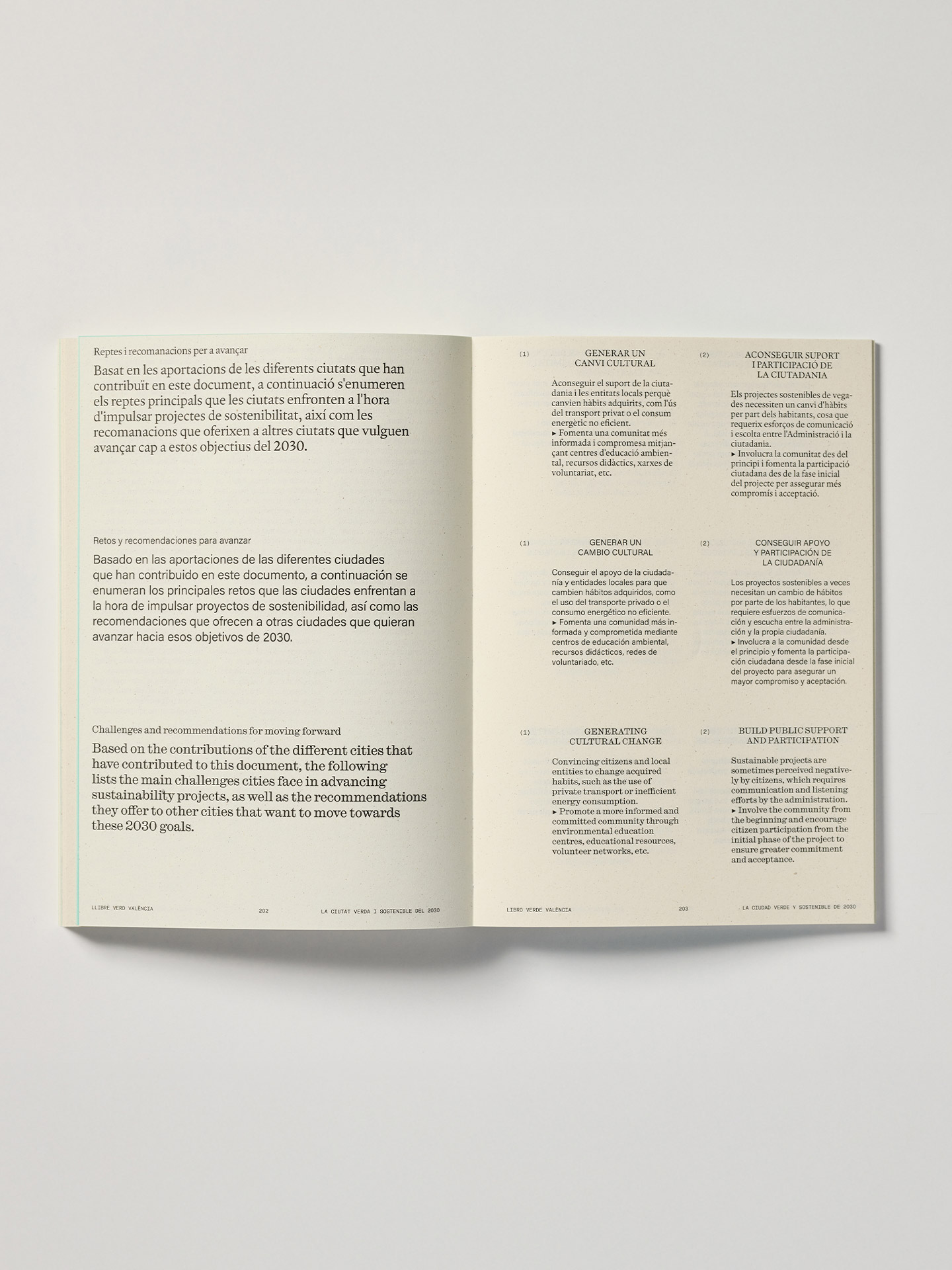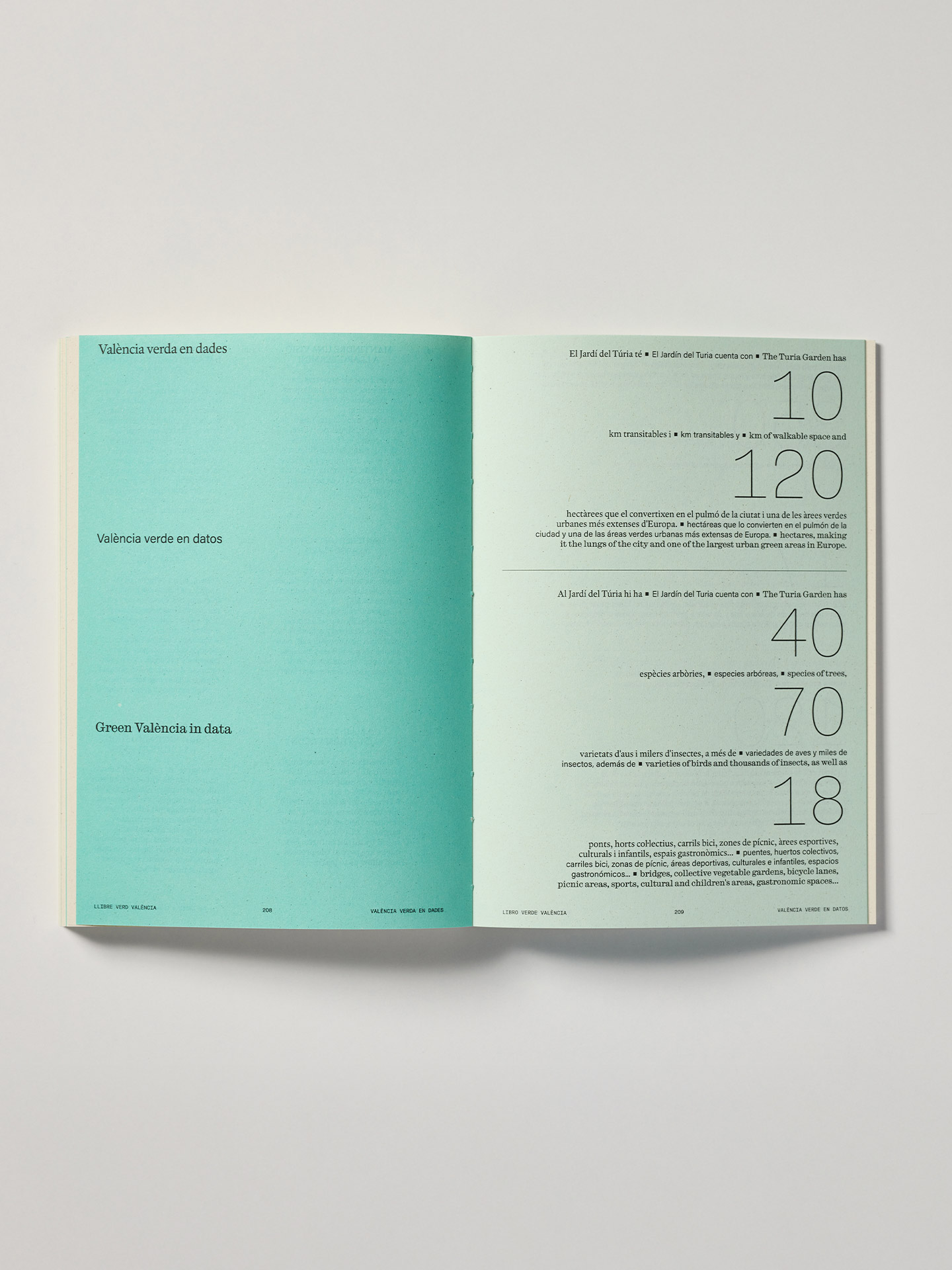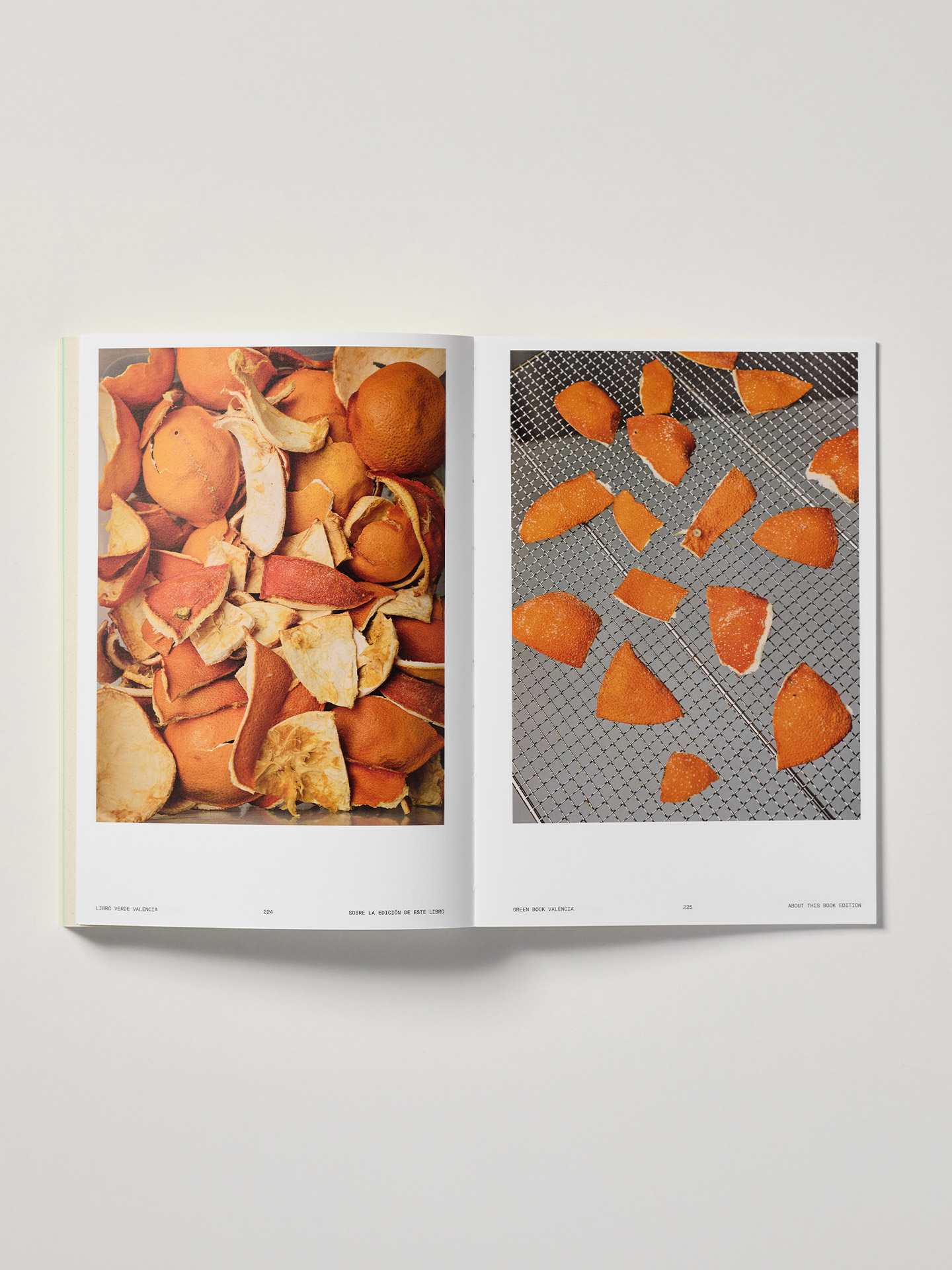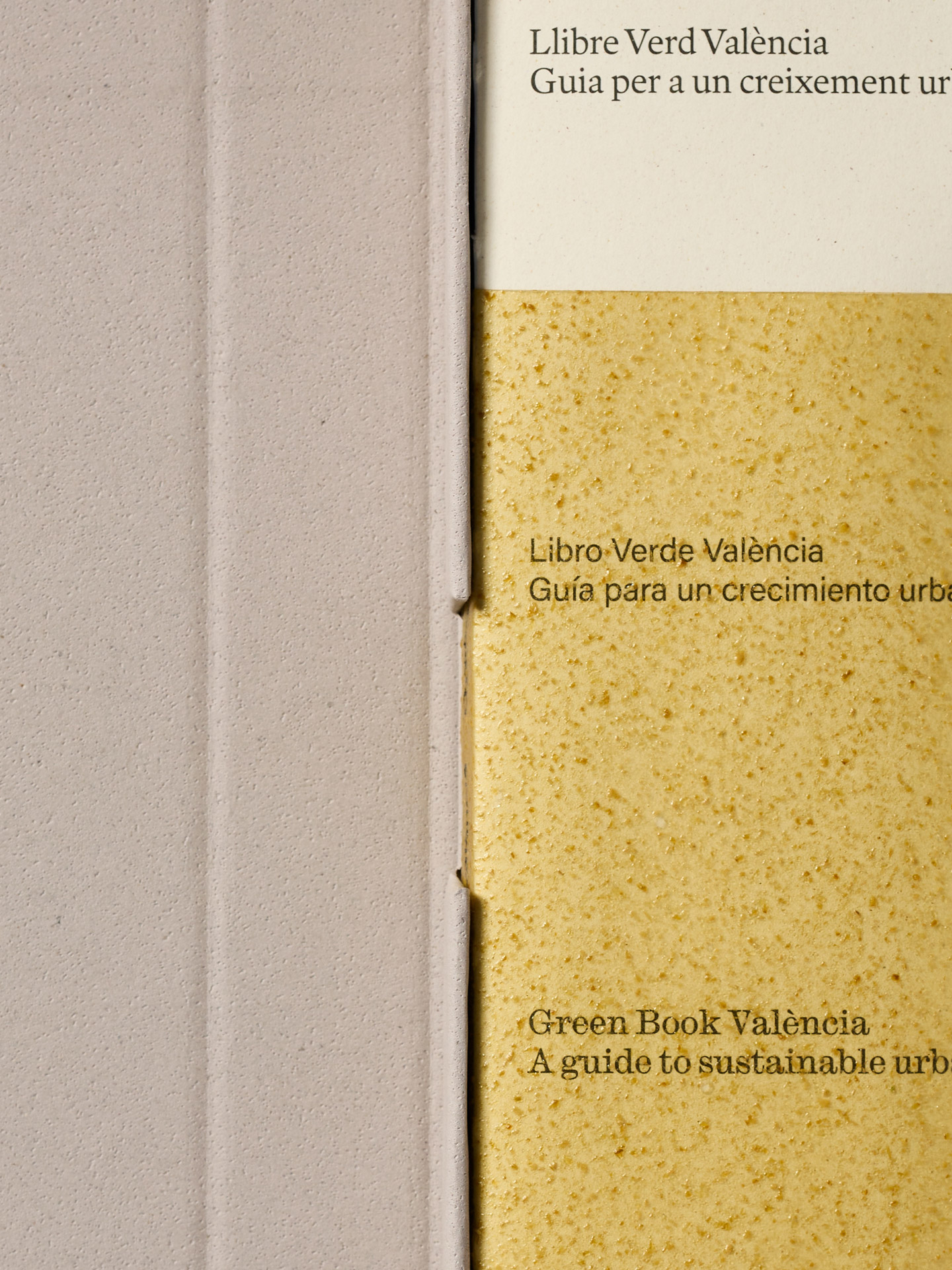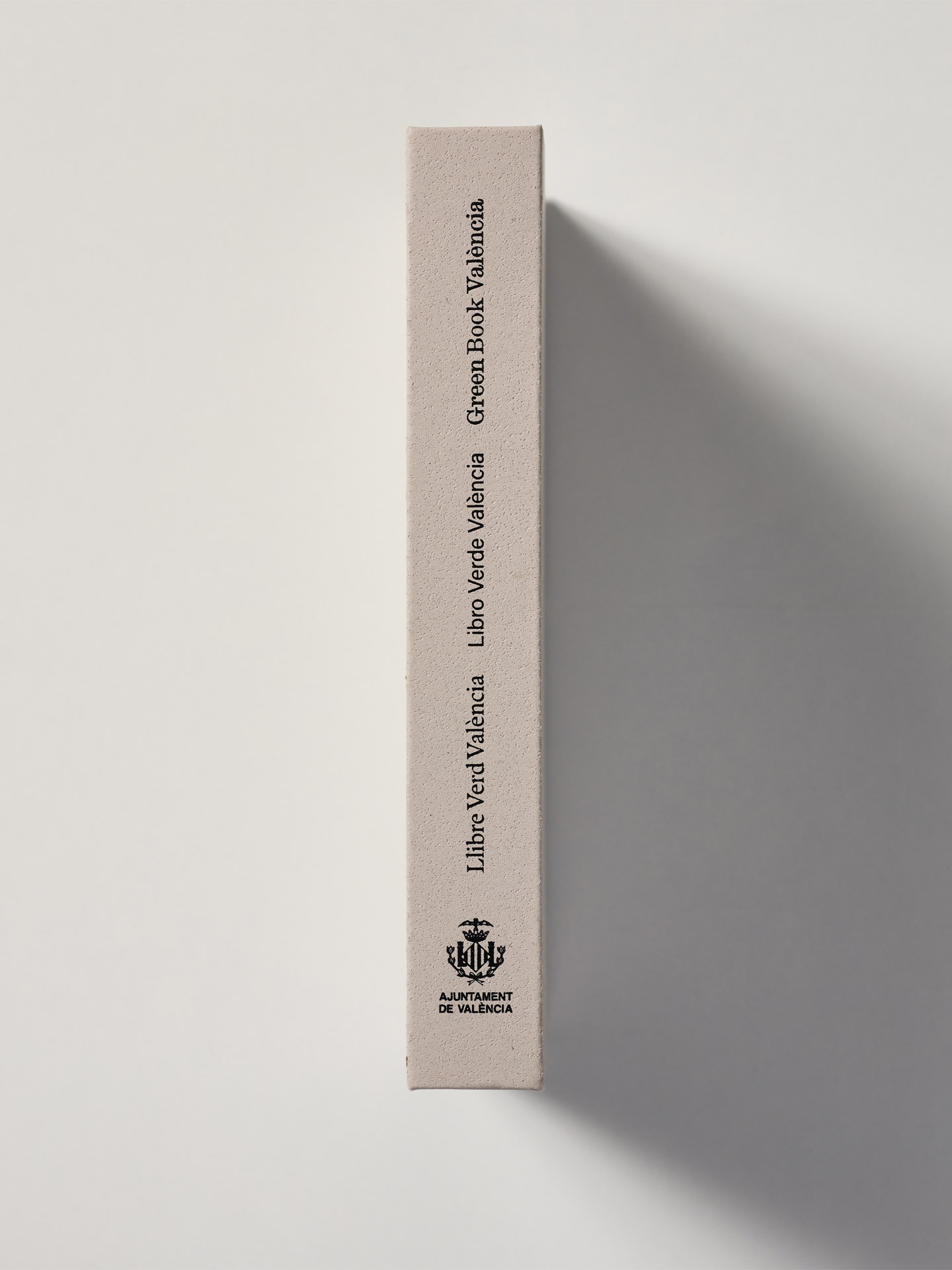
Guide for Sustainable Urban Growth

The recent history of València is the story of a collective success built on the character of a land that has always known how to stand up and emerge stronger from every historical challenge.
María José Catalá Verdet,
Mayor of Valencia
In 1957, a flood marked a turning point for València. It showed how vulnerable we were and the need to equip ourselves with the necessary infrastructures to protect us.
We, Valencians turned that tragedy into an opportunity. We modified the course of the river Turia and began to design a city around a green axis, the Turia Garden, with our sights set on protecting our great natural treasures: the Huerta, the Sea and l'Albufera. That decision changed the paradigm of the city, we re-emerged stronger and marked the beginning of a profound urban transformation. As a result of our decades-long commitment to sustainability, València has become European Green Capital. Becoming Green Capital is not the goal, it is a next chapter in València's history.
Now, the terrible flooding caused by the DANA that hit our land on the 29th of October 2024, and its tragic consequences, obliges us to redouble our efforts to make our city a safer and more resilient place, based on a city strategy that takes the pulse of its needs and redefines its priorities.
Because rebuilding does not only mean repairing; it means preparing ourselves for a safer future, protecting people and our cities and towns from the climate crises that we know will become more frequent and intense.
As a Green Capital, the first in the Mediterranean, and as a Mission City, our experience following the DANA (severe weather event) must also serve as a mirror for other cities and regions on how to protect, prepare, and adapt to the consequences of climate change, especially in the Mediterranean basin, ensuring at the same time security, development, and sustainability.
The European Green Capital title will leave a lasting mark on València, a point of continuation in a story we are determined to keep writing. These pages will bear witness to it. With this book, we aim to share our experience, not only to highlight all that we have achieved but also to inspire other cities to join this global movement towards a more sustainable future.
Our commitment to future generations is rooted in sustaina bility, environmental and social protection, economic strength, and security.
It is a project for a sustainable city based on clean mobility, green infrastructure, renewable energy, reducing the carbon footprint, and efficient systems to prevent and protect us from future extreme events. Always prioritizing green technologies and models that strengthen our climate resilience.
María José Catalá Verdet,
Mayor of València
Introduction
Cities are at a key moment in transforming towards a new societal model, one where people are central, sustainability and the protection of persons and environment, prosperity and economic development are strengthened, and social integration is achieved to ensure that no one is left behind.
The European Green Capital distinction is a recognition granted to pioneering cities that showcase the way forward in making this green transition towards the city of the future. Green capitals are cities that demonstrate clear commitment, but, above all, they invest in action by implementing real projects that enhance the lives of residents and visitors alike.
European Context
The European Union has committed to leading climate action, aiming to reduce its emissions by at least 55% by 2030 and achieve climate neutrality by 2050. These commitments have a significant impact on European cities, as they produce more than 70% of greenhouse gas emissions and consume over 65% of global energy.
The European Green Deal provides the roadmap to meet these commitments. This ambitious and visionary strategy covers a wide array of policies and plans to transform sectors such as energy, transport, agriculture, and industry. At its core, the Green Deal seeks to decouple economic growth from resource consumption and environmental degradation, thereby ensuring a more resilient and equitable future for Europe and all its citizens.
Perspectives on Vàlencia
València is set to advance towards a model of a green, sustainable, and future-ready city.
This green València is not only a sustainable city committed to caring for the environment, it is also a healthy city that promotes health in an integral way in all its actions and that provides safety and protection to its inhabitants; it is a shared city that seeks to promote justice, inclusion and equality and that facilitates that all people can enjoy a dignified life; it is a prosperous and entrepreneurial city that strengthens economic development, innovation, professional growth and attracts talent; it is a creative city where art, culture and creativity make it more liveable, enjoyable and resilient; and, finally, it is a Mediterranean city that opens up to the world with solidarity, with its own identity and that exports culture, traditions and talent.
València European Green Capital 2024
València has been selected as the European Green Capital for 2024. This recognition from the European Commission highlights the sustainable perspective València has integrated into its public policies over recent decades to create a city that is more accommodating for future generations and positions it as a beacon for green policies in the Mediterranean. 2024 was also the year in which València suffered one of the most tragic events in its recent history, caused by an extreme weather phenomenon in October, which highlights even more the importance of strengthening these policies for the protection of the environment and people.
Landmarks like the Turia Garden, Parc de Capçalera, and Parc Central are just a few examples of the city’s many urban green spaces. These are complemented by unique ecosystems such as the Albufera Natural Park, where native flora and fauna coexist with agriculture, fisheries, and other relevant actors of the unique wetland. In addition, València's public space and mobility policies prioritise people, ensuring cleaner and healthier air for everyone.
València in the face of extreme meteorological events
València aValència and its metropolitan area are situated within the Mediterranean arc, a region that has been disproportionately affected by the impacts of global warming for decades. As a result, extreme weather events have become more frequent here compared to other parts of the world. The city has been actively working to adapt to these challenges, drawing on lessons painfully learned from past incidents, such as the devastating flood of 1957.
Our resilience as a society and our ability to learn have driven us to implement measures such as the construction of large-scale infrastructure to mitigate, as much as possible, catastrophes like the one experienced in 1957. The most significant of these initiatives was the South Plan, designed to divert the course of the River Turia. This plan proved to be an effective measure in protecting much of the city from major floods, as demonstrated during the floods of October 29.
Unfortunately, the South Plan has not been able to safeguard the entire municipality of València. For this reason, the city is actively working to analyze the causes and provide knowledge-based solutions to protect the affected areas of the city and its districts, as well as other neighboring municipalities with which it shares water basins.
A Collective Journey
Driving the green transition requires a clear vision and strong political commitment. Yet, it also demands joint, collaborative action from society. Citizens play a central role in this journey and must be supported by public administrations, private companies, research centres, and all organizations that are based in or impact the city.
Throughout this book, some of these entities and individuals are highlighted as leaders in creating a green València. They include farmers preserving the Valencian agricultural landscape, small enterprises and energy cooperatives promoting renewable energy in the city, supermarkets electrifying their fleets for cleaner air, property managers helping residents refurbish buildings, and neighbourhood associations advocating for more green spaces in their areas and who respond, in coordination with the city council, to a tragedy by coordinating food and materials delivery and the work of volunteers.
The Green Book of València
The Green Book of València consolidates the city’s legacy and future vision, transforming them into concrete projects and policies that impact the daily lives of its residents. It draws on contributions from many European cities, offering a broad, cosmopolitan and integrative view of the green city of the future.
The objectives of this Green Book are:
- To provide a guide that inspires green and sustainable policies in cities and towns worldwide.
- To highlight and showcase the policies that have made València the European Green Capital for 2024.
- To establish a roadmap to continue advancing towards this kind, green, and future-ready urban model.
The Green Book of València is not a conclusion but is the common thread, a reflection that links past decades of progress and urban transformation, enabling València to become the European Green Capital for 2024, with the future projections and ambitions of continuing to move towards this urban model, sustainable, safe, green, innovative, and environmentally friendly.
Sustainable València
The city of València has a strong and agreed mandate for sustainability and environmental care that has grown in scope and ambition over the years, the need for a new, more necessary than ever after the tragic floods caused by the storm surge of 29 October 2024. This shared vision reflects a long-term commitment to protecting natural resources and people, reducing environmental impacts, and promoting a more resilient city prepared to face the climate challenges of the future.
This comprehensive and collaborative approach has been consolidated under the ‘sustainable look’, a vision that brings together all local and strategic initiatives that have the common goal of improving urban sustainability, protecting the environment, and increasing the city’s security and resilience to changing climate conditions. “Sustainable València” is not only a project of the present, but a mid-term and long-term strategy that is projected into the future, accompanied by initiatives such as the European Green Capital or the Climate Mission, ensuring the continuity of actions and policies of a balanced and environmentally friendly urban development.
The creation of this vision is the result of the confluence of various initiatives and strategic frameworks that have been driving the transformation of València into a greener, more inclusive, that protects the public from meteorological events. These initiatives include the Innovation Missions, which have allowed exploring disruptive urban solutions in areas such as energy, mobility, and citizen well-being, aligned with the Sustainable Development Goals (SDGs). It is also relevant to mention the València Urban Strategy, which defines a city model for the coming decades, focused on sustainability, energy efficiency and regeneration and rehabilitation of urban spaces. Another significant milestone is the recognition of València as European Green Capital 2024, which has rewarded decades of work in favour of the environment, sustainable and balanced urban growth and reinforces the city's position as an international benchmark in sustainability.
Sustainability in València is not a recent phenomenon, but dates back decades, when València began to integrate environmental criteria into its urban planning. Over time, this vision has been expanded and enriched, adapting to new global challenges, and aligning itself with regional, national and European strategic and regulatory frameworks. In this sense, Sustainable València has sought to provide coherence and continuity at the local level to major plans and initiatives such as the European Green Pact and the city's commitments to the green transition, seeking to create an urban model that meets current needs and guarantees a better future for future generations.
Purchase of l'Albufera by the city of València
Major flood in València
Diversion of the Turia River course
Suspension of the urbanisation plan for El Saler to protect the beach, located in l'Albufera.
Opening of the Turia Gardens
Declaration of l’Albufera as a Natural Park
Opening of sections 2, 3, 4, 5, 10, 11 and 12 of the Turia Gardens
Opening of the first underground metro section
Recognition of l'Albufera as a “Wetland of International Importance”
Opening of the first tram line in the city (Line 4)
Opening of sections 6, 7, 8, 9, 13, 14, 15 and 16 of the Turia Gardens
Introduction of the first waste separation bins in the city
Approval of the Strategic Plan for València 2000
Opening of the Oceanogràfic, which connects with the different marine habitats
Opening of the Cabecera Park, section 1 of the Turia Gardens
Opening of the Bioparc, an innovative and sustainable zoo
Signing of the Covenant of Mayors for Climate and Energy
Approval of the Sustainable Energy Action Plan for the city of València (SEAP)
Launching of the public bike-sharing system, Valenbisi
Approval of the València 2020 Climate Change Strategy
Approval of the Sustainable Urban Mobility Plan (SUMP)
Signing of the Covenant of Mayors for Climate Change Adaptation
Beginning of the València Central Park project
Signing of the Covenant of Mayors for Climate and Energy
All 8 beaches in València receive the Blue Flag award
The FAO declares the “Historic Irrigation System of l'Horta de València” an Important Agricultural Heritage System (SIPAM)
Approval of the Sustainable Energy and Climate Action Plan (SECAP)
Declaration of Climate Emergency approved
Opening of the first Energy Office
València reduces its greenhouse gas emissions by 30.9% compared to 2007 levels
Adoption of the Paris Declaration to limit the global temperature rise to well below 2°C
Selection of València for two European sustainability missions: Mission CITIES and Mission ADAPT
Approval of the Urban Strategy València 2030
Election of València as European Green Capital 2024
Accreditation of València as a Wetland City by the Ramsar Convention on Wetlands
Delivery of the EU Mission Label, as approval of the city’s Climate Agreement
Celebration of the European Green Capital Year, València 2024
Approval of the Low Emission Zone (LEZ)
Approval by the full City Council of the Biosphere Reserve project
Floods caused by the Dana of 29 October
Declaration of l'Albufera as a Biosphere Reserve by UNESCO
Opening of the Mouth Park, sections 17 and 18 of the Turia Gardens
Smart and climate-neutral city, for and by the citizens
City adapted and resilient to climate change
10 Elements of a green city
Advancing towards a green city is not a linear process with fixed steps to follow. We cannot rely on established recipes, or follow a controlled process of planning, acting, and assessment. The reality of a city is that many things are happening simultaneously, all of them interconnected. We must have a plan, but also the ability to analyse and listen to quickly adapt to reality and, most importantly, know how to weave alliances that could help us. A tragic example is the urgent and collaborative response required in the face of a extreme meteorological event as the DANA experienced on 29 October 2024. Therefore, managing a city and advancing towards sustainability can be akin to working on a vegetable garden. We must consider many things at once and be prepared for the unexpected. Additionally, different vegetables have different times and needs, and they also yield different results, just as in a city, no project is the same as another.
A key element in driving a city’s transformation towards sustainability is its commitment and political consensus. Without a clear and sustained leadership over decades, it is impossible to drive projects that require a long-term vision, significant investments, and changes in the way people live. The political context is like the sun, clouds, and rain... Without the necessary meteorological conditions, farmers cannot work, or their work is in vain. In València, this political leadership is reflected in the previous timeline, which shows how various climate initiatives and commitments have unfolded over decades, with different municipal governments. Some of the most recent political consensuses include the bid for the European Green Capital, the approval of the Climate Mission, the adoption of the strategic framework for the Urban Strategy València 2030, and the proposal of Albufera for UNESCO’s Biosphere Reserve status. Practical advice: When approving climate commitments or strategies, involve all political representatives, incorporate their contributions, and make it clear that these initiatives belong to the whole city, thus achieving broad consensus.
Once we have an ambitious political mandate, we must provide the people, tools, and structures needed to carry out that mandate successfully and efficiently. Sustainability and environmental policies are transversal across many areas, so they require training, coordination, and teamwork. Internal governance refers to the tools we use to work. Without them, we are inefficient and burn out quickly. In València, various working spaces in the climate field have adapted to the progress of green policies, such as the Internal Coordination Group of SECAP, the Climate Mission Community, and the Technical Committee for the European Green Capital 2024. Moreover, the municipal foundation “València Clima i Energia” has helped build a technical team across various areas, launched innovative projects, and attracted European funding and knowledge. Practical advice: To integrate sustainability into the daily work of all municipal departments, they must incorporate sustainability in their direct work, under the leadership of the Mayor's Office, and for each department to be equipped with sufficient training and human resources on the subject.
Once the administration is organised, it's time to look outward. Becoming a green city and preparing for the future is not solely the responsibility of the City Council; it requires collective action from the entire ecosystem of public, private, social, and academic entities. The ecosystem is like the family and friends who accompany us. When we have common goals, the work is productive and satisfying for everyone. In València, various initiatives aim to establish collaboration networks with entities in the city related to sustainability, such as the Energy Transition Table, the Missions València 2030 Ambassador Entities programme, and the sponsorship and collaboration of different organisations with the European Green Capital València 2024, or the cooperation of society in the face of the floods caused by the DANA. Practical advice: When engaging other entities, it’s necessary to share power and responsibility. Collaborating and co-creating isn’t just about communicating results, it involves allowing other organisations to define the vision, objectives, and projects of the city in a collaborative manner.
Of course, the city’s transformation must be done by and for the citizens. The green city we seek must be a better place to live, and a safe city, prepared to cope with, manage and respond to extreme events. The citizens are exemplified by the people who work, participate, and enjoy the garden and its products. Their involvement is crucial for ensuring the city’s present and future. In València, citizen participation has been and is a central axis of sustainability policies, with very varied initiatives such as the urban gardens of Sociópolis or the promotion of Local Energy Communities. In addition, there are historical social movements demanding sustainability in the city, such as “El llit del Túria és nostre i el volem verd” or “El Saler per al poble”. Practical advice: Achieving an active and environmentally aware citizenry requires time, planning, and consistency. Participatory initiatives must have real outcomes to avoid frustrating participants.
The process of transforming the city must consider the most vulnerable people, so that the changes do not negatively impact them. On the contrary, these changes should improve their quality of life. Promoting a just social transition can be summed up in the idea of leaving no one behind, protect and improve the lives of all people. The just social transition is visible in various ways: local employment, promoting savings, social cohesion, and improved mental and physical health. In València, we maintain a vision of a just transition in all sustainability and inclusion-related projects and plans. Examples from the energy sector include the WELLBASED project, which works with families in energy poverty to improve their physical and mental health, and the POWERUP project, which facilitates the participation of vulnerable individuals in collective self-consumption initiatives in the city. Practical advice: When defining projects that address the needs of vulnerable groups, it’s important to collaborate with entities that are on the ground. Social Service Centres or local NGOs work daily with these people, can relay their needs, and have their trust to facilitate participation.
To achieve successful climate action, a strategy is necessary to understand where we are, where we want to be, and how to get there. Defining this strategy involves gathering data, making sense of it, agreeing on a vision for the future, and prioritising action areas. All of this should be done collaboratively with the internal structure of the City Council, ecosystem entities, and citizens. Strategic planning is the soil from which our vegetables and fruits will grow. Preparing good ground will help us work better. In València, various plans guide long-term sustainability action, such as the strategic framework for Urban Strategy València 2030 and the commitments made in the Climate Agreement. These strategies are supported by data from Smart City VLCi, emission inventories, and future scenario projections. Practical advice: The moment of setting the city’s future vision is a very opportune time to seek broad consensus, as it allows all political representatives, city organisations, and citizens to feel part of the process and become excited about imagining the future city.
Once we have an ambitious and realistic strategy, it is time to define in detail the projects and actions that will help us achieve those objectives. Again, the exercise must be collaborative, as most projects require the direct involvement of other entities or people. Our action plan is the vegetables and fruits we harvest. Each project needs different times, resources, and care. In València, the action plan for the Urban Strategy València 2030, also developed in the Climate Agreement, offers a set of projects and policies that allow the city to advance towards sustainability. Practical advice: When defining the city’s action plan, it is important to incorporate projects that other organisations can implement or lead, not just those of the City Council. Also, treating the plan as a dynamic portfolio of projects and mapping the interconnections between different actions can help leverage synergies and avoid inefficiencies or inconsistencies.
A good strategy and action plan are useless without the necessary investment to carry them out. A crucial step in the city’s green transformation is ensuring that commitments and plans are directly translated into municipal budgets. However, the money from public administration is not enough to accomplish everything that needs to be done. Therefore, innovative financing mechanisms can allow companies, entities, or citizens to take direct action and invest in the sustainability of their homes, vehicles, or neighbourhoods. Investment is the water that nourishes our garden and allows everything we have been preparing to bear fruit. In València, the Climate Investment Plan developed in the Climate Agreement estimates that the savings and economic benefits of climate neutrality are 89% greater than the necessary investments. Practical advice: Conducting a good cost-benefit analysis can allow us to visualise the hidden profitability of certain actions. In this regard, estimating indirect benefits is especially important. For example, improving air quality reduces public health system costs, or promoting local green jobs provides a clear economic return.
It is important to emphasise that this process is neither linear nor static; in fact, everything usually happens at once and is constantly evolving: new budgets every year, participatory processes that are activated or deactivated, elections that may change the political landscape... Therefore, it is crucial to evaluate what is happening at all times and adapt to the needs and possibilities. Evaluation is represented by the paella we prepare with products from our garden. It allows us to taste the results and adjust for the future. In València, plans and strategies have indicator sets for tracking progress towards the objectives. In the case of the Climate Agreement, for example, iterations are carried out every two years to assess progress and reformulate future actions. Practical advice: Beyond evaluating indicators, it is important to maintain a culture of reflection and self-assessment. For example, it is useful to conduct interviews or periodic reflection sessions, where departments or entities can express their opinions on whether their expectations are being met and what they expect for the future.
Communication is a key element because it is essential for society to participate and lead the change. Specifically, three main objectives can be defined: 1. Raise awareness and educate about the importance and benefits of being more sustainable. 2. Highlight and make visible the well-done work and successful experiences. 3. Provide sufficient information and tools to motivate action. Communication allows us to make ourselves known and have an impact on our surroundings. In València, some of the most impactful communication campaigns in the field of sustainability have included personal stories, information on economic savings and grants, or details about specific neighbourhood projects. Practical advice: Communication is not something that happens at the end of the process; it should be planned continuously from the start. Moreover, we should focus on communicating all actions, projects and initiatives that have an impact on sustainable growth, energy transition and the improvement of the quality of life in cities.
Emblematic Projects
The green and sustainable city of 2030
As reflected throughout this book, sustainability and environmental policies in València are not a passing phenomenon but have been implemented for decades and will continue to be so in the future. The Sustainable València of 2030 is aligned with the vision of many other European and global cities for their sustainable development. The vision of moving towards an urban model that enables economic development, cares for the environment, and improves the living conditions of the people who live in and interact with the city.
This vision for the future is particularly reinforced by the tragic floods suffered by the DANA of 29 October 2024, which underline the importance of moving towards a city that protects people and the environment, prepares for extreme meteorological events and can rebuild itself according to a sustainable development model where mobility, energy, urban planning and green infrastructure share a clear focus on sustainability.
Based on the contributions of the different cities that have contributed to this document, the following lists the main challenges cities face in advancing sustainability projects, as well as the recommendations they offer to other cities that want to move towards these 2030 goals.
- ( 1 )
Generating cultural change
Convincing citizens and local entities to change acquired habits, such as the use of private transport or inefficient energy consumption.
► Promote a more informed and committed community through environmental education centres, educational resources, volunteer networks, etc.
- ( 2 )
Build public support and participation
Sustainable projects are sometimes perceived negatively by citizens, which requires communication and listening efforts by the administration.
► Involve the community from the beginning and encourage citizen participation from the initial phase of the project to ensure greater commitment and acceptance.
- ( 3 )
Managing limited financial resources
Lack of adequate funding to carry out large-scale projects is a recurrent obstacle.
► Start with pilot projects and then gradually move to a larger scale. In addition, secure funds from various sources, both public and private, to sustain projects in the long term.
- ( 4 )
Managing limited human resources
Cities do not have sufficient staff and profiles to drive certain sustainable projects.
► Invest in capacity building and training of municipal staff to effectively implement projects.
- ( 5 )
Obtain support from other administrations
Municipalities often depend on funds and regulations at national or other administrative levels to advance their sustainability projects.
► Make sure you have political backing from the beginning of the project and try to ensure that support and governance is in place at all necessary levels of administration.
- ( 6 )
Collaborate between different municipal services
Effective project implementation requires coordination between different municipal departments, which often function as silos.
► Build trusting structures and relationships that allow different departments to collaborate and step out of their comfort zones.
- ( 7 )
Collaborate with the ecosystem
Identification and collaboration between different actors (private, public, NGOs, universities, etc.) and sectors requires time, alignment of interests and generosity.
► Build alliances and collaborate with strategic partners that allow you to join forces and multiply the impacts of the project.
- ( 8 )
Overcoming bureaucratic and regulatory barriers
Accelerating city transformation requires simplifying bureaucracy and overcoming regulatory barriers.
► Initiatives such as ‘urban sandboxes’ or simply streamlining ordinances and administrative procedures can help to overcome certain bureaucratic barriers.
- ( 9 )
Maintain a long-term vision
Ensure that projects remain sustainable after the initial funding or political momentum has dried up.
► Develop an action plan with specific goals to ensure that resources and efforts are well targeted. Also, don't be discouraged by initial failures. Setbacks are part of the process and allow us to learn.
- ( 10 )
Recovering from and protecting against extreme events
Accelerate the recovery of the city, its inhabitants, and infrastructure after the damage caused by extreme meteorological events, as well as protect against future events.
► Mobilize and coordinate resources for a sustainable recovery, restoring the previous state and achieving more sustainable, better-protected places against future events.
Green València in data
The Turia Garden has
10
kilometers of walkable space and
120
hectares, making it the lungs of the city and one of the largest urban green areas in Europe.
The Turia Garden has
40
species of trees,
70
varieties of birds and thousands of insects, as well as
18
bridges, collective vegetable gardens, bicycle lanes, picnic areas, sports, cultural and children's areas, gastronomic spaces...
La Albufera is a unique wetland in Europe for being home to a great diversity of flora and fauna, with more than
350
species observed.
Within the Albufera Natural Park there are
17
kilometers of fine golden sandy beaches, often between protected dunes.
The Huerta de València has more than
120
square kilometers of fertile fields and land, where top quality fruit and vegetables are harvested, the basis of the Mediterranean diet and of our gastronomy.
València currently has
223.35
kilometers of cycle lanes and
37.57
kilometers of cycle streets.
Between 2021 and 2024,
35,170
square meters of pedestrian space have been recovered in València.
More than
70%
of citizens have a green space within a five-minute walk of their homes.
The city has
8.6
square meters of green space per inhabitant, but the aim is to reach
10
square meters by 2030.
405
different tree species have been identified in València's green spaces, which gives an idea of its magnificent biodiversity.
València has
1
tree for every
1.92
inhabitants or
1
tree for every
2.3
inhabitants if we stick to the strictly urban sphere (values higher than the WHO recommendation).
More than
150
companies have already signed up to the ‘Pacto Verde València’, a firm commitment to sustainable development in the city.
About the edition of this book
Can a book be something else? Can it transcend its own definition and become something other than a ‘set of bound pages’? If that is possible, this book seems like it could fit that bill. In fact, calling it a ‘book’ might even limit it. It is a book, but it is also a symbol, a showcase, a limited-edition gift. It is the culmination of the year in which València has been European Green Capital.
Raül Vicent & Cristina Alonso,
Fase Studio
What makes a book a book? This question has assailed us during the process of designing and producing this object, which for the moment we will call a book. In most of the articles that can be found online about the publishing industry, they use the data from the ‘Estadística de la Edición Española de Libros’ (Spanish Book Publishing Statistics), produced annually by the Ministry of Culture. This data exclusively records books with ISBN (International Standard Book Number), which Wikipedia defines as ‘a unique international numeric string that serves to identify basic object data such as title, publisher, print run, etc.’.
In 2023, 87,122 books were registered in Spain. Of these, 60,012 were on paper and 27,110 in other media. This book has an isbn, but if it did not, it might not be officially considered as a book in certain contexts. What could it be then? Let's try a classic: according to the rae, a book is a ‘set of many sheets of paper or other similar material which, bound together, form a volume’. The definition may seem terse, but it is very precise, and this object meets it. We can therefore safely say that this book is a book. Just another book.
Now, can a book be something else? Can it transcend its own definition and become something other than a ‘set of bound pages’? If that is possible, this book seems like it could fit that bill. In fact, calling it a ‘book’ might even limit it. It is a book, but it is also a symbol, a showcase, a limited-edition gift. It is the culmination of the year in which València has been European Green Capital. It must live up to this task.
The paper used to make it uses recovered citrus waste as well as post-consumer recycled fiber and cellulose from well-managed forests, except for this last sheet, for which we have selected another 100% recycled paper. The paper format is 14.5 × 21 centimeters, the size that wastes the least paper. Only two inks have been used for printing, black and Pantone Verde València. The presence of this color was required by the commission of this work, as well as the fact that all the content was in 3 languages. These two factors have marked the design of the content, as another of the premises was to use as little paper as possible. All of this embraced by a cover which is what makes it a unique object. It is a biomaterial made from red algae and orange peel recovered from the juicer of a supermarket near Sirope Lab's workshop.
Does all this make it the most sustainable book in the world? Surely not. Or a symbol, a showcase, a limited-edition gift? We don't know. But maybe this book just wants to be a book. Let's not make the mistake of asking it to be not just a book but too many things. We should not burden it with too many responsibilities, as it could lose its essence. Let it continue to think of itself as a book. We will always know that it is something more.
Like books, materials are bearers of stories, witnesses of our decisions and of how we inhabit the world. Just as a book holds in its page’s knowledge, memory or identity, each material carries with it the traces of its origin, the values of how it was created and the impact it will have on the environment. Materials have the power to influence the present and define the future. Every material choice is, in essence, a statement of principle, it is a political action.
Do we conceive of products to keep or to throw away? Do we extract and create them with respect or with indifference? Opting for green choices invites us to rethink how we understand consumption, value, and our reciprocity with the environment.
In a world facing critical environmental challenges, the design of cities and their products and services must change radically. It is inevitable not to mention what happened in València. It has been seen how an environmental catastrophe also directly causes a large generation and accumulation of waste. It is not only the losses that influence this, the new acquisitions for recovery and all that this entail, indirectly aggravate the situation.
We cannot continue to rely on materials and processes that damage ecosystems, generate unfathomable waste, and contribute to the climate crisis. It is time to rethink the role of materials, not as mere resources, but as key actors in the transformation towards a more endearing future.
Biomaterials and regenerative cycles offer a concrete response to this need. Inspired by nature, these materials are designed to integrate into the environment in a respectful way. Instead of becoming waste at the end of their cycle, they are reintegrated into the ecosystem, enriching the soil, or decomposing naturally.
The cover of this book is made from orange peels from the city of València, processed and dehydrated, transforming what would be waste into a beautiful and valuable resource. This bio-based material, which combines agri-food waste with a base of algae, is presented as an alternative that reflects the possibilities of creation from the biomaterial world and the transformation of waste.
It is a unique material, adapted to this project, which reacts with the environment, is biodegradable and, if left in nature, micro-organisms would feed on it. Although it is special in its composition, it is as easy to care for as any other book.
The use of local materials is a sustainable strategy and an act of environmental and cultural coherence. Incorporating the local, as well as boosting the economy and reinforcing the identity of the city, means claiming a clear message: sustainable design and production depend on an intelligent and respectful use of what we already have around us, leaving the use of big technologies in the background.
In this context, the linear economy model - produce, use and dispose - is being replaced by a regenerative vision: the circular economy. In this paradigm, materials are never final waste, but resources in transit. At Sirope Lab, we are committed to this narrative, proposing an example with this very book, where reusing, recycling, and transforming becomes, in addition to a functional product, a creative and cultural gesture.
València, as European Green Capital, can redefine its relationship with the environment, creating strategies and rethinking materials as a key to reinvent our cities and our future. The city of tomorrow is not only built with technology, it needs processes that respect the limits of the planet and the active participation of ecosystems.
Sirope Lab is a design and sustainability laboratory born in València, which explores new regenerative and bio-inspired materialities through design. We aim for this practice of creative transformation to inspire the city to generate a new eco-social narrative.
Alba Martínez y Luisa Tovar,
Sirope Lab

